





BROUGHT TO YOU BY THE VIRGINIA SOCIETY OF CPAs MAY/JUNE 2016 I VOL. 29 NO. 3 I VSCPA.COM DISCLOSURES.VSCPA.COM Wearable technology Part-time CFOs Port and R&D tax credits page 14 GET HAPPY EMPLOYEES The CFO’s guide to employee engagement
WHAT’S BETTER THAN CALLING ANY TIME YOU NEED ADVICE ABOUT RISK MANAGEMENT?

REACHING KNOWLEDGEABLE EXPERTS.
CAMICO® policyholders know that when they call us, they’ll speak directly with in-house CPAs and JDs. We have dedicated hotlines and experts in loss prevention, tax, and accounting and auditing issues. You can call as often as you need—and talk as long as you want—all free of charge. No one knows more about the profession, because we’ve been providing CPA Professional Liability Insurance and risk management advice for 30 years.


Connect with CAMICO.
Sign up for CAMICO Connectionour monthly enewsletter with risk management tips and articles. www.camico.com/camico-connection

Accountants Professional Liability Insurance may be underwritten by CAMICO Mutual Insurance Company or through CAMICO Insurance Services by a member company of the W.R. Berkley Insurance Group, rated “A+ (Superior)” by A.M. Best. Actual coverage may vary and is subject to policy language as issued.

©CAMICO Services, Inc., dba CAMICO Insurance Services All Rights Reserved.
CAMICO is sponsored by




CAMICO Rachel Painter, AINS Senior Account Executive
T: 800.652.1772 ext. 6773
E: rpainter@camico.com
W: www.camico.com
INSIDE this issue
FEATURES
CFO’S GUIDE TO EMPLOYEE ENGAGEMENT 14


CFOs are taking larger interests in employee engagement — critical to the financial success of their organizations.
PART-TIME CFOs, BIG-TIME EXPERIENCE 18

Companies without the need for a fulltime CFO or CIO can get the help they need by hiring part-time.
VIRGINIA TAX CREDITS 22
Get an in-depth look at how port and R&D tax credits are encouraging economic growth in Virginia.
CUT THROUGH THE WEARABLE HYPE 28
Is wearable technology right for you? Learn where wearables fall in the boom and bust technology cycle.
ARTICLES
Today’s savvy CFOs are doing much more than just finances. They are taking on larger roles to ensure the overall success of their organizations. On page 18, learn how a niche group of CFOs is helping smaller organizations find success. have and because
MARKETING MATTERS 9
SEO basics for financial services firms
HEALTH CARE 12 Health care regulations in 2016
AD INDEX
Aon 13 CAMICO 2 Beth A. Berk, CPA 32 Digital Benefit Advisors 31 Keiter 40 Nationwide 21 Poe Group Advisors 39
SECTIONS
BACKTALK
PRESIDENT’S PERSPECTIVE
ITEMS
DRAFT
ADVOCACY
NEWS
AM THE VSCPA
disclosures
is published bimonthly for members of the Virginia Society of CPAs.

Our mission is to enhance the success of CPAs.
MAY/JUNE 2016
4
5 LINE
6 DATA
8
10 VSCPA
33 CLASSIFIEDS 37 I
38
DISCLOSURES •
• DISCLOSURES.VSCPA.COM 3
Insurance Executive 6773 rpainter@camico.com
VIRGINIA SOCIETY OF CPAs
4309 Cox Road
Glen Allen, VA 23060 (800) 733-8272
Fax: (804) 273-1741 vscpa.com
disclosures
disclosures.vscpa.com
EDITORIAL STAFF
Jill Edmonds
Managing Editor disclosures@vscpa.com
Chip Knighton
Contributing Editor
cknighton@vscpa.com
David Bass
Public Relations & Communications Director dbass@vscpa.com
EDITORIAL TASK FORCE
Olaf Barthelmai, CPA
Adam Chaikin, CPA
Cheri David, CPA
Jennifer Eversole, CPA
Keith Gray, CPA
Genevieve Hancock
Alesia Lewis, CPA
David Peters, CPA
Mark Plostock, CPA
George Strudgeon, CPA
Barbara Sukramani, CPA
DEADLINES
Articles and advertising for future issues are due by 5 p.m. on the following dates:
July/Aug. 2016 May 2, 2016
Sept./Oct. 2016 July 5, 2016
Nov./Dec. 2015 Sept. 1, 2016
Jan./Feb. 2017 Nov. 1, 2016
March/April 2017 Jan. 2, 2017
May/June 2017 March 1, 2017
Statements of fact and opinion are made by the authors alone and do not imply an opinion on the part of the officers, members or editorial staff.
From VSCPA.com
BACKTALK you said it
It was great to partner with Jennifer [Eversole] on these visits. I encourage many more CPAs to become connected with their legislators and to support the VSCPA initiatives.
GARY THOMSON, CPA Richmond
VIA FACEBOOK >>
Such a wonderful man! Thank you professor Holland. — In reponse to a post on Jim Holland, CPA
MICHELLE STEWART EDDY, CPA Richmond
You are one of the best, Anne Baughn Hagen! Thanks for all you do. — In reponse to a post on Anne Hagen, CPA
ELSIE ROSE, CPA Richmond
Coming from you that means more than you know!
ANNE BAUGHN HAGEN, CPA Richmond
From the TWITTERSPHERE >>
VSCPA ENDORSED PARTNERS
Nothing beats a busy season ice cream social on a Friday afternoon! #ItsABusySeasonThing #TaxSeason @VSCPANews — @PBMARES

Did you know ACC students can join @VSCPANews for free? Too many benefits to list here in 140 characters ;) — @PROFMITCHELL
@VSCPANews CEO Stephanie Peters speaks on Peer Review at the @NASBA Executive Directors Conference. — @VBOANEWS
CONNECT: connect.vscpa.com
TWITTER: @VSCPANews, @FinancialFit
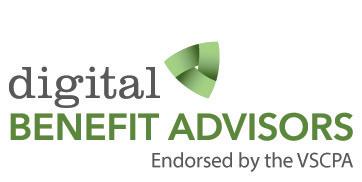
LINKEDIN: tinyurl.com/VSCPALinkedInGroup FACEBOOK: facebook.com/VSCPA INSTAGRAM: instagram.com/VSCPA
Get in touch At the Virginia Society of CPAs, we love to hear from you. Whether it’s a quick email to a staff member, chat on the phone, Disclosures letter to the editor, tweet, blog comment or something different altogether, let us know what you’re talking about, how you feel about different issues affecting CPAs and how we can help.
tweet or something different altogether, let us know what you’re talking about, how you feel about different issues affecting CPAs and how we can help.
4 DISCLOSURES
LEAD: Developing future leaders of our profession
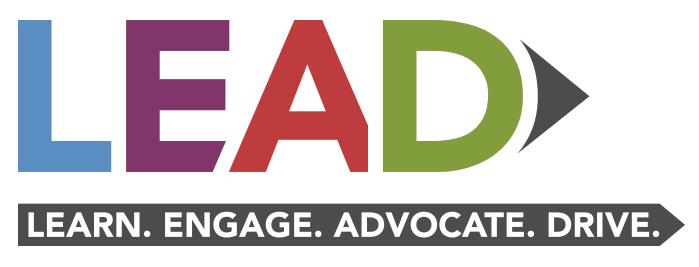
My 13-year-old son, Willem, and I were recently discussing one of his history class assignments. He was tasked with evaluating various 20th-century leaders and comparing and contrasting the great ones with the bad ones. So I asked him what the qualities of the great leaders were. He thought about it a little and responded, “Courage … respect for their people … letting people have a voice … being truthful.” I then asked him if he thought these qualities could be learned by anyone. He replied, “I think so.”
I think so, too. In fact, I believe it’s critical. Strong leaders are always learning new skills, and they practice them often. They do not just take a class here and there, but they use a blended process of experiences, mentorship, formal training and a personal commitment to better themselves.
We know the development of leaders is crucial to the future of the CPA profession. It’s key to building organizations that inspire and motivate young staff. It’s key to developing the collaborative and communication skills needed for how we will work in the future. It’s key to growing the next generation of leaders that will continue this great profession and take the reins when we move on. The VSCPA understands this, and we are committed to building the leadership capacity of the profession.
One path we are taking to ensure the future of the profession’s leaders is our LEAD initiative. LEAD stands for Learn Engage Advocate Drive, and it is a multifaceted approach to providing accounting professionals the resources and experiences they need to develop as outstanding leaders. LEAD not only includes formal leadership training opportunities, such as the Leadership Academy for young professionals, our in-depth seminars and free, single-topic
webinars. But it also includes opportunities for informal, interpersonal development through our networking events, our mentor program called MentorMatch and our myriad volunteer opportunities.
As older generations contemplate retirement, it becomes more and more important to develop the leadership qualities of younger CPAs to ensure the future of our businesses and our profession. While much of that must be done at the company and local level, it’s our job at the VSCPA to provide an infrastructure for training the leaders of the future.
This is just the beginning. We’ll continue to hone the LEAD initiative as we work to develop the professional leaders of the next generation. Visit vscpa.com/LEAD to get an overview of the programming involved (including a video) and delve deeper into the specific opportunities. And check these pages moving forward — we’ll be featuring leadership questions and their answers from established leaders and up-and-coming CPAs in the VSCPA News section of Disclosures The first installment on page 33 of this issue features insight from George Forsythe, CPA, of WellsColeman in Richmond and Aditya Yerramilli, CPA, of Google.
George and Aditya are two of the members of the VSCPA’s LEAD Task Force, which has been instrumental in turning the LEAD idea into reality. The other members of the task force are:
>> Asif Charania, CPA, Keiter in Glen Allen
>> Chris Ekimoff, CPA, FTI Consulting in Washington
>> Richard Groover, CPA, Wall, Einhorn & Chernitzer in Norfolk
>> Krystal McCants, CPA, CST Group, CPAs, in Reston
>> Kim Ruiz, CPA, LivingSocial in Washington

>> Heather Sunderlin,Wall, Einhorn & Chernitzer in Norfolk
>> Gary Thomson, CPA, Dixon Hughes Goodman in Richmond
>> Alan Witt, CPA, PBMares in Newport News
As always, we want to hear from you. Let us know if you have a leadership story you’d like to share or if there are any opportunities you feel aren’t being covered in our current programming. Let’s ensure we have strong, capable leaders now and for our future. n
STEPHANIE PETERS, CAE, has served as president and CEO of the Virginia Society of CPAs since 2007. speters@vscpa.com connect.vscpa.com/StephaniePeters @StephPeters
DISCLOSURES.VSCPA.COM
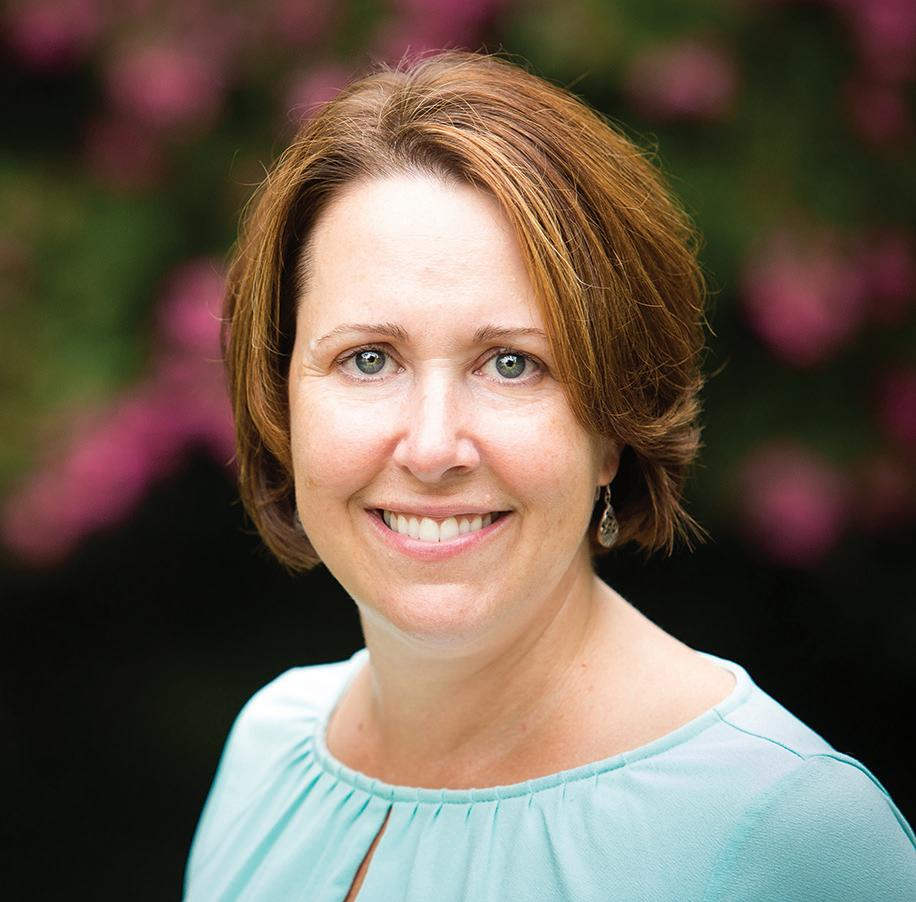
PRESIDENT’S perspective
DISCLOSURES • MAY/JUNE 2016 •
5
LINE items
CPA Exam facelift launches next year
On April 1, 2017, CPA Exam candidates will take a more “current, relevant, reliable and legally defensible” test, according to the American Institute of CPAs (AICPA). The AICPA Board of Examiners created a new version of the exam using input from accounting profession stakeholders.
The Exam sections are the same: Auditing and Attestation (AUD), Business Environment and Concepts (BEC), Financial Accounting and Reporting (FAR) and Regulation (REG). Changes include:
>> More task-based simulations to test higher-order skills.
>> Increased test time from 14 to 16 hours.
>> A shift in the weight of the questions. Previously, multiple-choice questions were approximately 60 percent of the total score; that will decrease to around 50 percent.

>> Blueprints to help students to prepare. The blueprints will replace the current Content Specification Outline and Skill Specification Outline, and contain around 600 representative tasks aligned with the skills required of newly licensed CPAs. Visit aicpa.org for more in-depth information on the new Exam. n
TIME TO RENEW!
Lock in your benefits for the 2016–2017 VSCPA membership year and renew today at vscpa.com/ Renew! Featured benefits include 18+ complimentary CPE credits, new & enhanced networking events and programs, partnerships and information along with your favorite benefits. It’s going to be a great year!
EXCELLENT EXCEL: HOW LONG AGO WAS THAT?
Here at the Virginia Auditor of Public Accounts, we focus on ensuring that individuals get the right training when they need it most. Some training is related to current assignments, while others are based on an individual’s time with the office. For example, everyone who has been with the office between 12 to 24 months should take an advanced Excel class. While we have start dates for everyone that we can quickly pop into Excel, it is hard to get a report out of the system that displays how long someone has been with the office. Thankfully, with a relatively short Excel formula I found online, we are able to show the number of years, months and days that someone has been with the office.
Assuming today’s date is entered in A1 and each employee’s start date is in column B starting on the second row, we would then enter the following formula in C2 and copy it all the way down to the end of our list:
=DATEDIF(B2,$A$1,“y”) & “years,” & DATEDIF(B2,$A$1,“ym”) & “months,” & DATEDIF(B2,$A$1,“md”) & “days”
If today’s date in A1 is 6/9/2016 and an individual started with the office on 11/28/2014, which would be in B2, the formula displays 1 years, 6 months, 12 days — letting us know that it’s time for them to get the all-important Advanced Excel training we feel every auditor needs.
You can also use this formula to create a countdown clock to the end of next year’s tax season or fiscal year-end! n

GEORGE D. STRUDGEON, CPA, CGFM, is an audit director at the Virginia Auditor of Public Accounts in Richmond. Email him if you have Excel topics you want him to cover.
george.strudgeon@gmail.com connect.vscpa.com/GeorgeStrudgeon
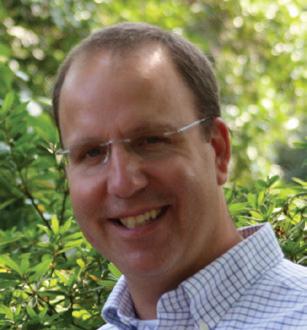
6 DISCLOSURES • MAY/JUNE 2016 • DISCLOSURES.VSCPA.COM
LINE items
Inside the AICPA’s proposed new association
The VSCPA Board of Directors has adopted a resolution in support of a proposal from the American Institute of CPAs (AICPA) to create a new association with the Chartered Institute of Management Accountants (CIMA). The AICPA is currently holding a membership ballot on the proposal that will remain open through June 16. Here’s what you need to know:
>> The new association would integrate operations and represent the entire accounting profession while preserving the membership bodies of both organizations.
>> Dues paid to the AICPA would result in automatic dual membership in the AICPA and the new organization.
>> The new association would represent more than 600,000 accountants worldwide, providing a stronger defense against
>>
onerous regulations that are increasingly originating overseas.
AICPA members would keep all the same benefits they currently receive and gain access to expanded resources, more education opportunities and enhanced advocacy.

>>
The AICPA would remain focused on promoting, protecting and growing the CPA credential.
AICPA members can vote in two ways. The third-party sender “AICPA Independent Tabulator” sent out a personal, confidential ballot to each member the week of April 18. If you can’t access that link, visit directvote.net/aicpa to access your unique voting credentials.
Visit aicpa.org/horizons for more information on the proposal. n
FEDERALLY SPEAKING
NEW LEASE ACCOUNTING STANDARD FINALIZED
STATE REFUNDS MAY TAKE SOME TIME
To cut down on identity theft and tax refund fraud, the Virginia Department of Taxation (TAX) is taking an extra precaution this year. Some taxpayers may receive a “Review of Tax Return” letter (called AUIN073A RAP Additional Review) to verify withholding information, which could affect the speed at which they receive state refunds.
CPAs can communicate to clients that receiving a letter is not negative; TAX simply wants to ensure taxpayers are receiving the refunds to which they are entitled.

“Receiving the letter does not mean they are victims of identity theft or that their returns contain errors or missing data,” TAX says. “It just means that their returns were stopped for review.”
If your clients receive a letter, they should read it carefully to determine which action they might need to take. More information on the letters is available on the TAX website at http://tinyurl.com/VATaxLetter. n
In February, the Financial Accounting Standards Board (FASB) published the final new lease accounting standard that mandates lessees recognize assets and liabilities arising from all leases, except for those with terms of 12 months or less. Public entities are required to adopt the standard for reporting periods beginning after Dec. 15, 2018, and nonpublic entities have an extra year to adopt. More info is at fasb.org.
IRS RELEASES REVISED FORM 3115
In March, the U.S. Internal Revenue Service (IRS) issued a revised Form 3115, Application for Change in Accounting Method. Dated December 2015, this is the first revision of the form since 2009.
FINAL REGULATIONS ADDRESS FOREIGN INVESTMENTS
The IRS issued final regulations (T.D. 9751) addressing the amount of withholding required when foreign taxpayers dispose of investments in foreign real property. The regulations are in response to December 2015 amendments to the Foreign Investment in Real Property Tax Act. n
DISCLOSURES • MAY/JUNE 2016 • DISCLOSURES.VSCPA.COM 7
Virginia farm product demand drops
The four-year surge in demand for Virginia’s agricultural products halted last year. After hitting $3.35 billion in 2014 (a 14 percent growth over 2013), demand for those products in 2015 declined by 4.7 PERCENT to $3.19 BILLION
The decrease reflects a larger nationwide trend of declining commodity prices, especially in soybeans (Virginia’s largest farm export). Other countries had record crop yields and some foreign markets had new trade barriers or higher shipping costs. The top three countries importing Virginia agricultural products are:
1. China: $694 million
2. Canada: $291 million
3. Switzerland: $204 million
What Virginia products have other countries clamoring? Soybeans, pork, lumber/logs, soybean meal, leaf tobacco and many others.
Virginia is still the second-largest farm product exporter in the East Coast (behind Georgia), even though its number of smaller farms in 2015 declined 3 PERCENT from 2014, from 45,900 to 44,700.
According to the Virginia Department of Agriculture and Consumer Services, the size of the average farm slightly increased. There were 8.1 MILLION acres of farmland in the Commonwealth in 2015. n

A GOOD BET FOR GROWTH
What shows more sales growth than private companies overall? Accounting firms, that’s what. A Sageworks survey found that firms providing accounting, tax prep, bookkeeping or payroll services had a 12 PERCENT growth in sales in 2015. That’s a jump from 9.5 percent in 2014 and 7.6 percent over the last five years. n
YOU’VE GOT (NASTY) MAIL!
Taxpayers received some unwelcome surprises last winter in their email inboxes. The U.S. Internal Revenue Service (IRS) alerted consumers and taxpayers after it saw a whopping 400 PERCENT increase in phishing and malware incidents in the 2015 tax season. The fraudulent emails were confusing — designed to trick taxpayers into thinking they were official communications from the IRS or tax software companies. The emails asked for a wide range of personal information, such as PINs, filing status, refund info and more. Some taxpayers even received fraudulent text messages. n

Virginia drivers pay high taxes
Virginia has one of the highest vehicle property taxes in the nation, according to WalletHub. In a ranking of all states and the District of Columbia, the Commonwealth was NO. 50 — just behind Rhode Island. Virginia currently taxes vehicles at 4.19 percent. Only Virginia and Rhode Island tax over 4 percent; 23 states and D.C. have no vehicle tax. That means that, for an average $23,000 car, Virginia drivers will pay $966 in taxes per year.
The Commonwealth fares better when it comes to real estate property taxes. It ranks NO. 16 with a tax rate of 0.8 percent. So the annual taxes on a $243,500 home (the median price for a home in Virginia) are $1,941. New Jersey takes the No. 1 spot at 2.29 percent. n

8 DISCLOSURES • MAY/JUNE 2016 • DISCLOSURES.VSCPA.COM DATA draft
SEO basics for financial services firms
BY DAVID R. PETERS, CPA
The way we shop has changed. No longer do we travel around from store to store looking for the perfect birthday gift. We simply go to Amazon. No longer do we call a restaurant to order take out. We simply use GrubHub. We book airline flights, pay our bills and even schedule our doctor’s appointments online. We are very comfortable with doing things with as little human interaction as possible. In fact, we seem to prefer it.
So why do so many financial services firms allow their clients to do so little online?
While it is true that nearly every accountant, attorney and insurance agent has a website, too often they show only the barest of facts. If you don’t believe me, try doing a Google search for “accounting firm.”

Many of the search results will be businesses that will only list a name, address, phone number and the services they offer. Indeed, these websites are little more than electronic versions of a business card. To a prospective client, there is very little differentiation between one accountant and another. After all, what insights can they really glean when all they know is that you do “tax preparation for individuals and small businesses?”
When I have posed this question in the past to CPAs, many tell me how most of their new clients come from referrals, and that accounting is a relationship business. I do not want to discount the importance of referral-based business or client relationships, but it’s important to realize that a website can be a powerful way for attracting new clients that you may not be able to reach with your current client base.
The numbers speak for themselves. According to Comscore.com, we average more than 12 billion searches per month in the United States. And the Search Engine Journal website says 93 percent of online experiences begin with a search engine. The key to reaching the clients you can’t see is making your website easy to find and a tool for building connections. Search Engine Optimization (SEO) is the marketing term for doing this. It involves making focused efforts to ensure your website shows up when relevant key words are searched for by potential clients.
SEO might sound expensive and complicated. It doesn’t have to be, but it does take persistence and effort. Generally, the more popular your website is and the more relevant content you have, the higher your site will rank in unpaid search results. Paid ads will always appear first, but the more you build up a content library that is useful to target clients, the higher you will be in the unpaid search results and the more findable you become. For example, if your practice targets small businesses, you might consider blogging about small business tax credits, succession planning or key employee life insurance. Such topics would naturally be attractive to your target clients.
You can also build your website’s popularity by providing helpful tools and resources for your clients. For example, telling a client what he/ she might need to bring for a tax planning meeting can be insightful for the client and lessen the amount of time you spend chasing down documents. You could provide the opportunity to make appointments online or tell them unique aspects of your approach. The key is to think about what your clients would find valuable and then help them differentiate you from everyone else. To do this, however, you must offer insightful information about yourself. Simply putting a phone number on your site is not enough. Keep in mind that if a potential client wants to call you, they will probably get your number from their search engine. But if they are clicking around your website, they probably aren’t ready to talk yet! Make sure your site provides them with information that meets their needs and makes them want to call you.
A word of caution: Building strong website content is not something that is simply done once. Nothing will kill an SEO strategy faster than out-of-date content and broken links. New content that consistently appears on the website is necessary for implementing a successful SEO strategy. Just like any lasting relationship, it takes time to develop a connection with clients you can’t see. It does pay off in the long run, though. In the meantime, just remember — financial services are built on relationships, whether you can see the client or not. n
DAVID PETERS, CPA, is the strategic relationship manager and financial advisor for Carroll Financial Inc., in Charlotte, N.C. He is also an adjunct professor in accounting, insurance and ethics, a doctoral student in financial planning and sits on the Disclosures Editorial Task Force. dpeters@carrollfinancial.com connect.vscpa.com/DavidPeters www.carrollfinancial.com
The information discussed herein is general in nature and provided for informational purposes only. There is no guarantee as to its accuracy or completeness. Nothing in this article constitutes an offer to sell or a solicitation of any offer to buy any type of securities. Registered Representative of and securities offered through Cetera Advisors Network, LLC, Member SIPC/FINRA. Advisory services offered through Carroll Financial Associates, Inc., a Registered Investment Advisor. Carroll Financial and Cetera Advisors Network, LLC are not affiliated.
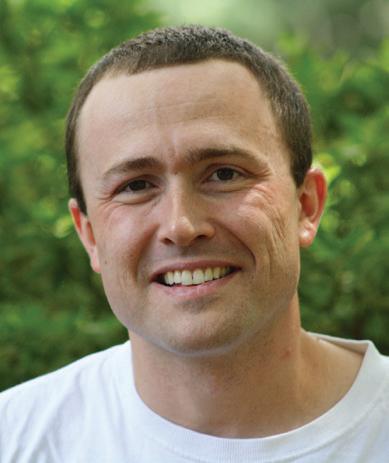
DISCLOSURES • MAY/JUNE 2016 • DISCLOSURES.VSCPA.COM 9
MARKETING matters
Post-Stosch era kicks off with quiet session
The 2016 Virginia General Assembly session was the first in three decades that the VSCPA had to navigate without its greatest ally in Richmond — former Sen. Walter Stosch, CPA (R-Henrico), who retired at the end of 2015. His absence, while still felt profoundly in the Capitol, didn’t stop the VSCPA from accomplishing its legislative priorities and protecting CPA interests, even in seemingly unrelated legislation.
TAX CONFORMITY
The annual issue of tax conformity saw its quickest resolution in recent memory, with Gov. Terry McAuliffe signing HB 402 into law Feb. 5. The bill and its Senate counterpart, SB 545, provided permanent conformity with the enhanced earned income tax credit and advanced Virginia’s date of conformity with the U.S. Internal Revenue Code (IRC) to Dec. 31, 2015. As always, the VSCPA supported the bills, which contained emergency clauses.
VIRGINIA DEPARTMENT OF TAXATION (TAX) LEGISLATION
The VSCPA didn’t take official positions on other legislation introduced by TAX, but did play its usual role in making sure new legislation didn’t cause conflicts with Virginia accounting statutes. This year, with the 2016–2018 state budget being determined, we closely scrutinized the budget bills to make sure they contained the proper accounting language. We also tracked unsuccessful bills that would have introduced new penalties and restrictions for filing fraudulent tax returns.
REGULATORY/EMPLOYMENT REFORM
The VSCPA also sought to prevent unintended consequences for the accounting profession on other bills. HB 499, HB 838 and HB 1388 all created potential barriers to effective regulation of the accounting profession before the VSCPA worked with the bills’ patrons to mitigate negative impact. The VSCPA also tracked two unsuccessful “ban-thebox” bills, HB 530 and SB 335.
To hear Emily Walker, CAE, VSCPA vice president of advocacy, discuss the 2016 General Assembly session, click on the video above in the digital Disclosures edition at disclosures.vscpa.com, or watch it at tinyurl.com/2016SessionRecap.

FANTASY CONTESTS ACT
HB 775 and SB 646 place Virginia at the forefront of legitimizing and regulating the fantasy sports industry, and the VSCPA played a role by making sure the audit requirements contained in those bills match requirements the requirements contained in U.S. Generally Accepted Auditing Standards (GAAS).
BUDGET ITEMS
The VSCPA supported two line items in the aforementioned biennial budget that would increase funding for two organizations with missions the VSCPA supports. The Community Tax Law Project provides free legal representation to low-income Virginia residents in tax disputes, educates taxpayers about their rights and responsibilities and advocates for low-income taxpayers. The Virginia Council on Economic Education is the primary organization assisting Virginia teachers in attaining the comfort level with basic economic and personal finance principles to effectively teach the subject. At press time, both items were still included in the budget, but had not yet been approved by McAuliffe.
Follow more on the VSCPA’s efforts at in the “Advocacy” section of vscpa.com, where you will find news, position papers and more. n
10 DISCLOSURES • MAY/JUNE 2016 • DISCLOSURES.VSCPA.COM
ADVOCACY

HEALTH care
Checking the pulse of health care in 2016
 BY PHILIP SAUL
BY PHILIP SAUL
To a large degree, employers have been consumed over the last few years determining which aspects of the Affordable Care Act (ACA) apply and how to be in compliance with the law. The most recent task, absorbing both time and resources, has been the ACA reporting requirements for Applicable Large Employers (ALE). While that issue will remain front and center for the foreseeable future, there are other significant compliance concerns of which employers should be aware. Many are an offshoot — or even part of the next wave — of the ACA.
Here are some things to keep in mind this year that could impact your business:
HEALTH INSURANCE PORTABILITY & ACCOUNTABILITY ACT (HIPAA) PRIVACY & SECURITY
With many stories of breaches over the last year, privacy has become top of mind. If an employer has reason to handle Private Health Information (PHI), their processes should be evaluated to ensure minimum standards for encryption and security controls are met and a notification process is in place should a data breach occur. Key steps include designating a privacy officer and creating an information security program per appropriate regulations. Many employers have started offering various ID protection products to health care plan members as an additional benefit to help employees deal with security and privacy concerns.
AFFORDABLE CARE ACT REPORTING — NOW WHAT?
Now that ALEs are required to begin ACA reporting, other issues may emerge. For example, what happens if an employee who was offered “affordable” coverage from their employer has been collecting a subsidy through the public exchange, even though they were not eligible? Technically, the employee owes this money back via their taxes. Employers may be faced with issues like this as ACA reporting begins to identify discrepancies.
FUNDING
Both large and small employers are exploring funding alternatives to fully insured medical plans in an effort to reduce ACA-related taxes. Funding, however, can affect things relative to compliance and the ACA. Self-insured groups, for instance, potentially have access to additional PHI, which may impact how an employer deals with the Health Insurance Portability and Accountability Act (HIPAA) and privacy. Self-insured employers are affected differently regarding ACA compliance (reporting, fees, etc.). As an employer evaluates funding options, careful attention should be paid to related compliance and ACA changes.
U.S. DEPARTMENT OF LABOR (DOL) AUDITS
What if you got a U.S. Department of Labor (DOL) audit tomorrow and had 10 days to respond? Would you be able to produce copies of your Summary Plan Description, benefit booklets, enrollment package, Summary of Benefits and Coverage, 5500s, COBRA notices, etc., to comply with the deadline? Employers should ensure they have up-todate documents regarding the administration of their benefits plan. Now that the reporting requirements have become a reality, there could be an uptick in audit activity.
COVERAGE CONSIDERATIONS
Many employers are reviewing plan provisions to ensure they align with current regulatory guidance as well as their own company culture. Some, for instance, previously included domestic partner coverage for same-sex couples. Now with the option of marriage for both same-sex and opposite-sex couples, employers should consider if they want to continue with domestic partner provisions and perhaps be required to expand them to opposite-sex domestic partners. (Related to this, employers should review documentation requirements to make sure they are consistent for same-sex and opposite-sex couples).
12 DISCLOSURES • MAY/JUNE 2016 • DISCLOSURES.VSCPA.COM
HEALTH care
Other key issues regarding coverage considerations include employee definitions (full-time, part-time, variable, contract/1099) and eligibility requirements (when a person is eligible to be covered under the plan). The loose use of the “contract/1099” employee definition has been problematic for some employers. This definition has been used in the past to avoid costs, such as providing benefits to a segment of employees. If, in reality, the contract employee functions as a regular full-time employee, this may emerge as a problem in a future audit — or even in a lawsuit directly from the employee. While the use of the contract/1099 employee definition is widely used, the employer should review documentation related to these positions to confirm they clearly outline the roles and responsibilities of workers under this designation.
It is worthwhile to note that in an election year many employers tend to gravitate toward a “wait-and-see” posture in hopes that any perceived adverse sections of a particular legislation are changed. While it is not unheard of for changes to be made (e.g., employer ACA fees were delayed from the original date and the Cadillac tax has been postponed for a few years), we caution employers to at least have a contingency
plan to be in compliance for any applicable regulations by the deadline.
It is a daunting task to keep up with the vast array of regulations and compliance issues. Employers should keep up to date on relevant updates and engage a knowledgeable resource with the expertise to stay informed. Audits may not be a common occurrence now, but the frequency is anticipated to increase and financial penalties can be substantial. n
PHILIP SAUL is principal at Digital Benefit Advisors, a national team of local employee benefits advisors. He has more than two decades of experience in the insurance industry. Digital Benefit Advisors is an endorsed partner of the VSCPA. psaul@digitalbenefitadvisors.com

When it comes to accountants professional liability insurance…

does not fit ALL ONE SIZE
That’s why it’s so important to have insurance advisors who specialize in working with CPAs that can tailor your professional liability insurance to the size of your firm.
The AICPA Professional Liability Insurance Program:
• All size firms and areas of practice are eligible
• Premium credits for AICPA Audit Quality Center and Private Companies Practice Section (PCPS) membership, risk control training, peer review, and more
• CPA NetProtect® — pays for certain costs associated with privacy breaches and provides liability coverage for network damage claims such as cyber attacks*
contact Richard Bacher at Aon
at 1.800.221.3023 or visit www.cpai.com/onesize today!
those of any third parties including the CNA companies. “CNA” is a service mark registered by CNA Financial Corporation with the United States Patent and Trademark Office. Certain CNA Financial Corporation subsidiaries use the “CNA” service mark in connection with insurance underwriting and claims activities. Copyright © 2016 CNA. All rights reserved. E-11344-516 VA

DISCLOSURES • MAY/JUNE 2016 • DISCLOSURES.VSCPA.COM 13
Please
Insurance Services
Administered by:Underwritten by:Endorsed by: *CPA NetProtect® is offered for an additional fee as part of the AICPA Professional Liability Insurance Program. Aon Insurance Services is the brand name for the brokerage and program administration operations of Affinity Insurance Services, Inc. (TX 13695), (AR 100106022); in CA & MN, AIS Affinity Insurance Agency, Inc. (CA 0795465); in OK, AIS Affinity Insurance Services, Inc.; in CA, Aon Affinity Insurance Services, Inc. (CA 0G94493), Aon Direct Insurance Administrators and Berkely Insurance Agency; and in NY, AIS Affinity Insurance Agency. One or more of the CNA companies provide the products and/or services described. The information is intended to present a general overview for illustrative purposes only. It is not intended to constitute a binding contract. Please remember that only the relevant insurance policy can provide the actual terms, coverages, amounts, conditions and exclusions for an insured. All products and services may not be available in all states and may be subject to change without notice. The statements, analyses and opinions expressed in this publication are those of the respective authors and may not necessarily reflect
THE CFO’S GUIDE TO EMPLOYEE ENGAGEMENT
 BY JENNIFER EVERSOLE, CPA
BY JENNIFER EVERSOLE, CPA
14 DISCLOSURES • MAY/JUNE 2016 • DISCLOSURES.VSCPA.COM MANAGEMENT
This model often leads to conflicting efforts that can prove detrimental to the organization. CFOs often focus on hard metrics like return on investment, profit margin and inventory shrinkage. Finance executives are often more comfortable with these types of metrics because they are lagging indicators that definitively show what has already happened using objective, verifiable information.
CFOs tend to feel less at home with the softer metrics that surround employees, particularly employee engagement levels. These numbers are based on how employees feel, making them more subjective. Feelings can fluctuate and change frequently and cannot be reconciled to prove their validity, which causes angst for some quantitative types.
Progressive CFOs of today, however, are increasingly stepping out of their comfort zones to take a much larger interest in employee engagement because they understand that this leading indicator is critical to the financial success of their organization.
DEFINING EMPLOYEE ENGAGEMENT
Employee engagement is defined by the employee’s commitment to the company. Couples get engaged because they are committed to one other. The same concept applies to employee-employer relationship. In order for employees to be engaged at work, and therefore committed to the organization, they must believe that the company is committed to them as well.
Employee engagement is demonstrated through behavior. Engaged employees believe in their company and will do what is best to help move the company forward, even when nobody is looking. They will go above and beyond, not just for personal financial gain or recognition, but to help the company succeed. They have a personal stake in their company’s success and will proudly tout their employer to others in their everyday lives.
THE IMPORTANCE OF ENGAGEMENT
The importance of employee engagement is explained by the psychological theory of cognitive dissonance. When an individual’s attitudes and beliefs conflict with their behavior, the result is often a feeling of discomfort. We instinctively seek to restore harmony and rid ourselves of the discomfort by changing either our beliefs or behaviors when the two are not congruent.
For example, let’s assume that you are a highly engaged employee consistently exhibiting productive behavior that supports the company’s success. If you suddenly discover that the company is acting in a way that you believe is unethical, subconsciously you have two choices. You can rationalize and convince yourself that the actions of the company are not that bad, thus altering your ethical beliefs. Or, you can change your behavior by quitting or exposing the unethical actions.
Behaviors are inherently much easier to adjust than beliefs. That means that, in the long run, if an employee’s attitude toward their company
declines and they become disengaged, it is their behavior, not their beliefs, that will most likely change.
Employee engagement is important because it drives employee behavior, which has been proven to drive organization results.
Study after study, as shown in Table 1 (see page 16), indicates a direct correlation between a company’s financial results and how employees feel about — and interact with — the company.
Based on these and many other research studies, those who are charged with the financial health and prosperity of an organization should view employee engagement as one of their top priorities.
HOW TO PROMOTE ENGAGEMENT
COMMIT TO EMPLOYEES
In other words, ask not what your employees can do for you, but what you can do for your employees.
Consider abandoning traditional performance reviews that typically involve pages of standard forms to grade employees on their accomplishments and failures over the past year in an effort to recap past performance. In reality, most performance reviews are based on recent performance and ignore most of the accomplishments and struggles throughout the entire review period. It’s no secret that most people do not enjoy the process of u
DISCLOSURES • MAY/JUNE 2016 • DISCLOSURES.VSCPA.COM 15 MANAGEMENT
Many companies operate within functional silos where the chief financial officer (CFO) is responsible for all things finance and the chief human resource officer (CHRO) is responsible for all things employee.
TABLE 1. STUDIES SHOWING THE POWER OF EMPLOYEE ENGAGEMENT
SOURCE REPORT FINDING
HEWITT RESEARCH Employee Engagement Higher at Double-Digit Growth Companies
GALLUP How Employee Engagement Drives Growth
Companies with double digit growth have employee engagement percentages averaging 63 percent, which is more than 20 percent greater than that of companies achieving single digit growth.
Companies with an average of 9.3 engaged employees for every actively disengaged employee in 2010–2011 experienced 147 percent higher earnings per share compared with their competitors.
work they are doing provides value and has a positive impact all around them. Employees are instantly demotivated when they perceive that the work that they are doing has no meaning and doesn’t provide value. It is imperative that business leaders align the work that employees are doing day to day with the important things that drive success.
SEEK INPUT FROM ALL LEVELS
McLEAN & COMPANY Make the Case for Employee Engagement
Disengaged employees cost an organization approximately $3,400 for every $10,000 of salary.
TOWERS WATSON 2012 Global Workforce Study High engagement companies had a 27.4 percent average operating margin, while low engagement companies had an average operating margin of 9.9 percent.
giving or receiving an annual performance review. Managers typically aren’t comfortable in the role of judge. And the whole process often demoralizes employees.
Consider a coaching program in place of annual performance reviews. Coaching is an interactive process that helps another person improve, learn something and/or take their performance to the next level. Advantages to the employee include:
>> Building valuable skills that can be used to further their careers
>> Increased self-confidence
>> Feeling empowered, supported and encouraged
But that’s not all. Employers also benefit immensely from coaching by:
>> Getting the most out of employees
>> Building the next generation of leaders
>> Retaining talent
If you break it down, the primary element of coaching is simply talking to employees. It’s actually more about listening to employees. Find out what employees want to do, how they want to contribute to the success of the company and how you can help them knock down roadblocks.
SHOW EMPLOYEES THEIR CONTRIBUTION TO THE COMPANY’S SUCCESS
People want to be a part of something bigger than themselves. Most people aren’t in it just for a paycheck. They want to know that the
In order for employees to truly understand their contribution to the company’s success, they must first know what success looks like. After business leaders define success and what it means to the company, employees across the organization should participate in creating the strategy for achieving success. Once the strategy is solidified, it should be continuously communicated to every employee. Employee involvement in strategy execution should become a part of the fabric of the organization. Because strategies must evolve and change as business environments transform, changes to the objectives and/or initiatives that make up the strategy need to be broadcast quickly and effectively throughout the company.
FOSTER POSITIVITY
Dale Carnegie Training and MSW•ARS
Research conducted a study to determine the drivers of employee engagement and discovered that emotions drive engagement. Employees who have high levels of enthusiasm, inspiration, empowerment and confidence are five times more engaged than employees who have negative emotions.
To foster positive emotions, leaders should project optimism in their interactions with employees at all levels. Negativity breeds negativity. There is nothing more demotivating than a boss who complains about everyone and everything around him or her.
16 DISCLOSURES • MAY/JUNE 2016 • DISCLOSURES.VSCPA.COM
MANAGEMENT
MANAGEMENT
Leaders should also build a climate of trust. They should exhibit transparency and consistency in their actions and should never, ever gossip about employees to their co-workers. Gossip has negative consequences in any situation, but especially when it is perpetrated by someone an employee is supposed to respect and follow. Trust is immediately diminished and relationships are weakened when an employee is forced to participate, even if they are just listening, in unconstructive conversations about their colleagues.
MEASURING ENGAGEMENT
An obvious way to measure employee engagement is periodic employee engagement surveys. In other words, simply ask the employees through a series of questions how they feel about the company. Employee engagement surveys are a valuable tool if given in the right environment, one where the employees trust the leaders. Without trust you are not likely to get honest results, especially in smaller companies where employees may fear that they will be “found out” if they are critical towards the company.
Other potential pitfalls of measuring engagement through surveys include bias from recent events and the potential for gaming, i.e. employees telling you what you want to hear rather than what they really think.
And, because engagement is about attitudes and feelings that can change frequently, the survey results will only tell you about a point in time and doesn’t necessarily reflect an employee’s overarching attitude towards the company. So, while it is certainly helpful to find out what employees perceive their level of engagement to be, there is more straightforward data that companies can gather to ascertain the engagement level of employees.
Engagement drives behavior. It naturally
follows that behavior is a more accurate indicator to use in measuring an employee’s engagement level. A few behaviors to measure are:
1. Discretionary effort. This is the amount of time spent working outside of normal working hours. Engaged employees are passionate about their work and will often gladly spend their own time to help the company succeed.
This does not mean that employees should be expected to work long hours or sacrifice their personal lives for the sake of the company. Employees should be recognized for quality of work over quantity. For this purpose, you are simply using past information about the amount of extra effort employees chose to put forth so that you can make an assessment about their engagement level.
2. Volunteering for projects. Employees who are engaged will view opportunities to work on projects outside of their normal job duties as a privilege that they can look forward to, even if it means putting in extra time.
3. Suggestions. Employees who believe that their opinions matter will look for better ways to do things and bring those suggestions to their managers. And to take it a step further, the number of suggestions that are accepted is an indication of alignment of employees and the company.
4. Training opportunities. Do employees seek out training opportunities? Engaged employees want to learn more so that they can grow professionally and further the company’s success.
As we all know, actions speak louder than words. While it is important to seek feedback from employees through surveys, studying employee behavior gives leaders quantifiable
insight into how employees feel about the company.
SUMMARY
Forward-thinking CFOs understand the importance of stepping outside of their functional area to focus on employee engagement, a critical factor driving success. The importance of employee engagement has been studied at length and the benefits have been proven by real data time and again.
Employee engagement should be an objective at every organization supported by initiatives that are supported by the entire executive team. As with any initiative, executives should take the time to find the right metrics to measure success.
An intentional culture of employee engagement leads to happier employees.
Happier employees are more productive, loyal and engaged, which drives even more positive change. The cycle is never-ending. Everybody wins. n
JENNIFER EVERSOLE, CPA, is co-founder and partner at Management Stack, LLC, a technology biased advisory and consulting firm in Roanoke. She is a member of the VSCPA Board of Directors and serves on the Disclosures Editorial Task Force.
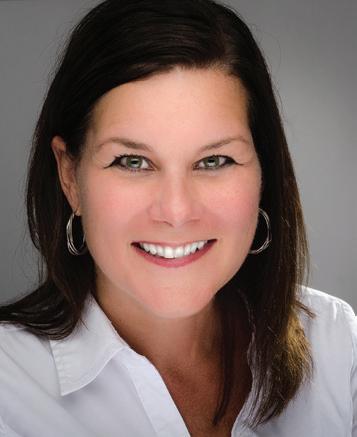
jeversole@managementstack.com connect.vscpa.com/JenniferEversole @JennDuff_CPA
linkedin.com/in/jenniferduffcpa managementstack.com


DISCLOSURES • MAY/JUNE 2016 • DISCLOSURES.VSCPA.COM 17
PART-TIME CFO, BIG-TIME EXPERIENCE
 BY CHIP KNIGHTON
BY CHIP KNIGHTON
18 DISCLOSURES • MAY/JUNE 2016 • DISCLOSURES.VSCPA.COM INDUSTRY
Many businesses, particularly those in the embryonic stage, could use intensive, forward-thinking financial or technology help. In other words, they need a C-suite executive. But in many cases, they can’t afford to pay C-suite money every year.
That’s where some CPAs, like Chris Fraser, have seen an opportunity. Fraser operates the Fraser Company, a Florida-based business technology consulting firm where he provides C-suite services to companies on a parttime basis, and provides contract services to Mendelson Consulting. His accounting and technology expertise allows him to step in as chief financial officer (CFO) or chief information officer (CIO) and help a company improve its financial standing.
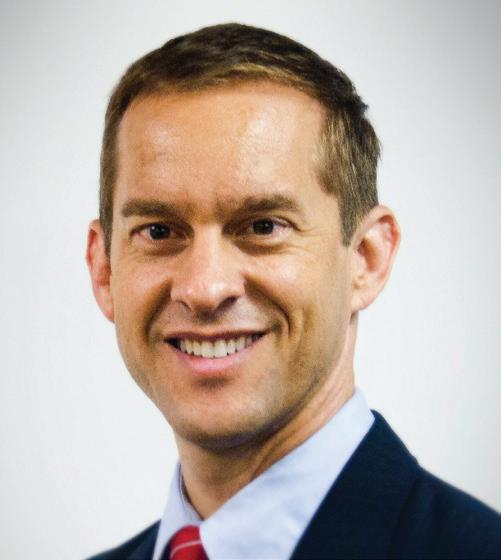
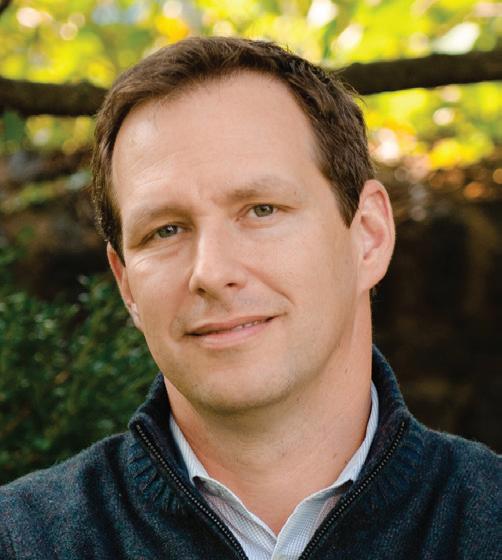
“There are a lot of companies who need expertise or advice or help when it comes to managing their business,” he said. “Especially from a technology aspect, which is such a core part of any business operation these days. There are a lot of companies who aren’t big enough to justify a full-time CIO. So I provide fractional CIO services — helping companies assess their overall system needs and putting new solutions in place.”
To oversimplify the issue, part-time CFOs and other C-suite executives can give a fledgling
company more of an air of legitimacy. The leaders of small businesses that have gone through a period of fast growth often find their finances more complicated than they’d previously imagined. And companies looking to raise funds or go public can benefit from the professionalism a CFO — particularly one who has obtained the CPA credential — provides.
That’s without paying C-suite wages year after year. According to a 2012 survey from Robert Half Financial and Accounting, the average salary range for a CFO at a small or mid-sized company can be anywhere between $94,250 to $182,250. That’s a big outlay for a company looking to raise funding or right the ship.
“You’re getting access to a CFO without paying CFO salaries and benefits,” said Jason Miller, CPA, principal of the JS Miller Group PLLC in Washington, now doing business as SoftwareCPAs. “It allows a smaller company to appear larger and more serious about their financials, if they’re going in to get a bank loan or talking to investors. It tells the strategic partners that you’re a lot more serious about numbers than a standard business owner.”
Payment structure for part-time CFOs and CIOs can vary wildly. Some such consultants are engaged for a particular project and are paid accordingly. Others work on an ongoing basis and charge an hourly or monthly
fee. Rates can vary based on individual qualifications and professional specializations, client size and industry.
Miller is continuing his part-time CFO work, but limits his clients in that area since he’s rolled that business into a new accounting practice focusing on technology clients. His part-time CFO clients tend to fall into a sweet spot of between $2 and $12 million in revenue.
“Above that, and depending on complexity, you need a full-time CFO,” he said. “Below that, you might not need a CFO at all.”
BITS AND BYTES, DEBITS AND CREDITS
Many CPAs who offer part-time CFO services tend to have expertise in technology to go with their accounting background, and that’s no coincidence. Upgrading systems and processes can go a long way toward improving a company’s financial future.
Many part-time CFOs and (especially) CIOs hold the Certified Information Technology Professional (CITP) credential from the American Institute of CPAs (AICPA). Larry Boyd, CPA, of Resources Connection in New York, says that a well-trained CPA can help a company leverage technology to accomplish the role of a controller and a CFO. u
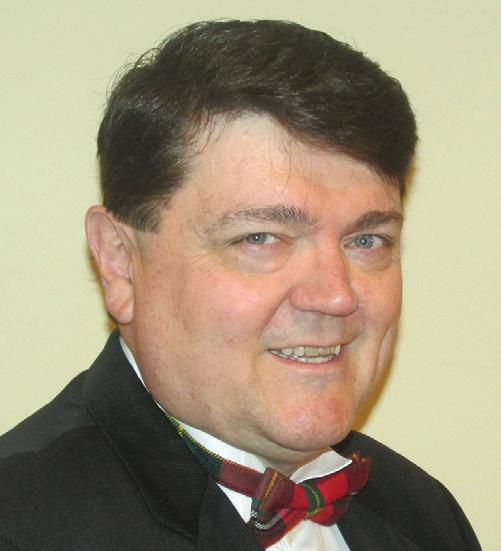
DISCLOSURES • MAY/JUNE 2016 • DISCLOSURES.VSCPA.COM 19 INDUSTRY
LARRY BOYD, CPA CHRIS FRASER, CPA JASON MILLER, CPA
INDUSTRY
“So much of what I’ve done is to work with the controller on their objectives, but at the same time accomplish the CFO’s role of providing information,” he said. “There are financial and non-financial metrics that lead into the operational leadership of a company. The person who is going to decide what’s coming next in a business usually isn’t the controller.”
“I have jokingly always said I like to translate the bits and bytes to debits and credits and vice versa. But at the core, it’s understanding the business reasons or needs behind something that the business wants and being able to translate that into systems,” Fraser said. “I’ll work with a vendor, and the vendor thinks technically but doesn’t understand the business rationale. I can fill the gap between the two.”
Boyd has never advertised himself as a parttime or interim CFO, but rather as a fixer who will do whatever he can to help a financial organization transform its operations. He assesses where a company is, what it wants to become and how to close the gap through the organizational pillars of people, process and technology.
“I call it a conference room pilot,” he said. “You have to sell people on the journey and how they’re going to get there.”
And while an accounting and technology background is ideal for that task, that doesn’t mean that just anyone with those areas of expertise can do the job.
“A lot of what’s going on in finance these days is creating business advisory-type roles,” Boyd said. “Not everybody in finance and accounting is good for that. They’re good with data, but not necessarily good with being futuristic and helping an organization move in a direction.
“You can be good at analysis and reporting, but that doesn’t make you good with futurism.
That’s a skills gap within most finance organizations.”
So what other skills are necessary to fill C-suite functions on a part-time basis? Tax experience is helpful, particularly in the business arena and in all jurisdictions where your company functions. You’ll also need to be current on regulations and business laws in those localities.
“You have to have CFO experience, hands down,” Miller said.” You cannot become somebody’s part-time CFO without prior CFO experience. People try it. I don’t know if they’re successful at it. But you have to know what it’s like to sit in a board meeting. You have to know how to think like a CFO.”
The proper education is also helpful. The CPA is vital to many aspects of the CFO role, but further business education on top of that can help with the necessary outlook.
“I think the thing that prepared me the most was an MBA in finance,” Boyd said. “The accounting is all about measurement and disclosure, and the MBA in finance put me in the office of the CFO. Prior to that, I was in the office of the controller. Controllers are current-day and past, and CFOs should be envisioning the future and what needs to change to make it happen.”
THE PART-TIME CFO SALES PITCH
Like any service-based business, there’s a degree of self-promotion required to be successful in the part-time CFO arena. Referrals make up a major part of many parttime CFOs’ business, particularly for those who aren’t part of an established accounting or consulting firm.
Industry groups can help in that regard. Fraser, the son of former Florida Institute of CPAs (FICPA) President Skipp Fraser, CPA, has found success through that organization.
He’s also made fruitful connections through the AICPA’s CITP group and local business and leadership organizations. And in addition to all of those outlets, there’s good old-fashioned personal referrals and ad hoc professional networks.
“Everybody has some sort of an expertise. Even though we may do certain similar things, each person probably has an area that they excel at — different tools in the toolbox,” Fraser said. “I have a friend who’s a part-time CFO consultant who specializes in bankruptcies and turnarounds. Others specialize in IT governance. I’m more than happy to swap referrals or needs back and forth with those to bring in the right person to do the right thing.
“It’s a big enough pool that it works better if I help other people and they help me.”
A strong social media presence is also a must, and that doesn’t just mean LinkedIn. Twitter and other outlets can help you position yourself as a thought leader and stand out in a crowded market.
The sales aspect of the part-time C-suite gig isn’t for everyone, whether because of the time commitment — which can be substantial — or for personality reasons. Working as part of a bigger group, as Boyd does, can help in that regard, but involves the attendant sacrifice of professional autonomy. Truly striking out on one’s own means you only eat what you kill.
“It’s something where you have to generate hours,” Miller said. “Every month, you’re resetting your hours. That’s tough. I’m one guy, and the only way to grow your business is to increase your hours or increase your rates.”
IN SICKNESS AND IN … SICKNESS
Some clients who engage part-time CFOs are startups looking to legitimize their business through the use of a professional. Many of
20 DISCLOSURES • MAY/JUNE 2016 • DISCLOSURES.VSCPA.COM
Part-time CFOs and CIOs help companies create opportunities and solve problems.
INDUSTRY
them are looking to raise money and expand their businesses. Others are seeking help for less positive reasons. That can make for a steeper learning curve and necessitate some tough answers.

“There’s a reason they call you and they need a CFO, and it’s generally not because things are great,” Miller said. “You have to clean it up.”


And whatever their motivation, it’s important for part-time CFOs to make clear to their clients that they’re not getting a full-time employee. Sometimes, their needs won’t be the top priority.
“You get what you pay for. If a company is only going to allocate a certain amount of money, there’s only a certain amount of my services they’ll get,” Fraser said. “They may



have a major change that they’re trying to go through, and that could require more time and effort. If they’re only grabbing a day or two per week, that could stretch out the time it takes to do the project.”
Like any accounting specialization, parttime C-suite services can be as fulfilling and lucrative as you’re willing to make it. Whether you’re a forecasting whiz or a technology guru, these services represent yet another career path the CPA credential can make available.

“There’s more to life than debits and credits,” Boyd said. “You can become a key advisor to an organization. People see audit work and tax work as boring, but it’s a training ground. You can do it for the rest of your life, but you can splinter off and do other things.” n
CHIP KNIGHTON is communications manager at the VSCPA, as well as contributing editor at Disclosures magazine. cknighton@vscpa.com connect.vscpa.com/ChipKnighton @ChipKnighton
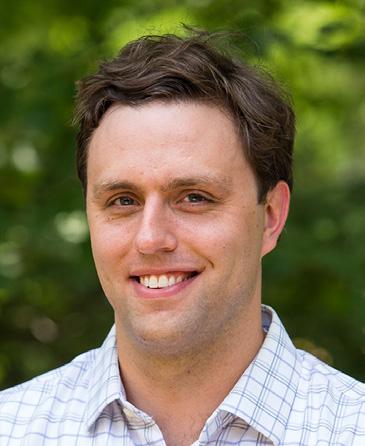
DISCLOSURES • MAY/JUNE 2016 • DISCLOSURES.VSCPA.COM 21
Because Virginia Society of Certifi ed Public Accountants has partnered with Nationwide, you can save with exclusive discounts on Nationwide auto insurance. Add Accident Forgiveness and/or Vanishing Deductible, and you can save even more. Nationwide may make a fi nancial contribution to this organization in return for the opportunity to market products and services to its members or customers. Products Underwritten by Nationwide Mutual Insurance Company and A liated Companies. Nationwide Lloyds and Nationwide Property & Casualty Companies (in TX). Home O ce: Columbus, OH 43215. Subject to underwriting guidelines, review, and approval. *Vanishing Deductible is an optional feature. Annual credits subject to eligibility requirements. Max. credit: $500. Details and availability vary by state. Products and discounts not available to all persons in all states. Nationwide, Nationwide Insurance, the Nationwide framemark, On Your Side and Vanishing Deductible are service marks of Nationwide Mutual Insurance Company. © 2016 Nationwide Mutual Insurance Company AFO-0915AO (03/16) Ronnie Shriner shriner@nationwide.com 2571 Homeview Dr Richmond VA 23294 Ronnie Shriner Insurance Agency Inc Phone: (877) 683-3364 Experience benefits that reward you Contact me today to see how I can save you money on your insurance.
Promoting Virginia’s International Trade
BY RUSSELL HELD
The Port of Virginia is a unique collection of marine and inland cargo terminals situated in the Mid-Atlantic within one day’s drive of two-thirds of the nation’s population. The finished goods, raw materials, components and consumables that people, businesses and industry use every day move across docks of this port. As a major gateway to global trade, The Port of Virginia continues to gain traction as an essential cog in the economic development machine, both regionally and statewide. The port has proven itself a significant asset for existing Virginia businesses as well as international firms
seeking strategic, advantageous expansion, relocation or investment opportunities.
The positive economic impact of this reaches organizations and individuals on multiple levels, locally and statewide, and is no coincidence. A study published by the College of William & Mary’s Raymond A. Mason School of Business in December 2014 highlighted the economic importance of the port in fiscal year 2013. The study found the port generated $60 billion in instate spending, accounting for 6.8 percent of Virginia’s 2013 gross state product (GSP). Moreover, the research shows that the port
provided more than 374,000 jobs (direct, indirect and induced) amounting to 9.4 percent of the Commonwealth’s resident employment that year. Total compensation for that labor force was $17.5 billion.
During the 2011 session, the Virginia General Assembly enacted legislation establishing three Port Tax Credits and a Port Development Grant to incentivize Port of Virginia cargo volume growth and economic development for the Commonwealth. During the 2016 session, the Virginia General Assembly extended the sunset dates of the three Port Tax Credits to 2022. Although all

22 DISCLOSURES • MAY/JUNE 2016 • DISCLOSURES.VSCPA.COM TAXATION
Virginia port tax credits and a grant program encourage agriculture, manufacturing and distribution.
TAXATION
three credits offer incentives related to port activities, each credit is mutually exclusive and separate definitions and requirements apply to each credit. A taxpayer may qualify for more than one credit in the same year, but cannot claim more than one credit for the same activity. Below are descriptions of the port tax credit and grant programs.
PORT VOLUME INCREASE TAX CREDIT (CODE OF VIRGINIA SECTION 58.1-439.12:10)
>> Tax credit for taxpayers engaged in the manufacturing of goods or the distribution of manufactured goods, agricultural entities or mineral or gas entities that use public or private port facilities located in Virginia and increase port cargo at these facilities by a minimum of 5 percent in a single calendar year over their base year cargo volume.
>> The base year is either the preceding tax year or the first year a company moves 10 20-foot Equivalent Units (TEU) or 75 non-containerized tons, or 10 units of roll on-roll off cargo through a public or private port terminal in Virginia.
>> Volume increase requirement waived for a new major facility. This is a facility to be located in Virginia that is projected to import/export cargo through a Virginia port in excess of 25,000 TEUs in its first calendar year.
>> Credit is $50 per TEU or unit of roll-on roll-off cargo in excess of the base year cargo; tonnage conversion rate is 16 tons = 1 TEU.
>> Major facilities receive a credit of $50 per TEU during the facility’s first calendar year.
>> Credit can be claimed against Virginia individual or corporate income tax.
>> Available for taxable years beginning Jan. 1, 2011, but before Jan. 1, 2022, there is a cap of $250,000 per taxpayer or more if there is excess money in the pot or less if the pot is oversubscribed. The cap is $3.2 million per calendar year and the remainder can carry forward for up to five years.
>> Taxpayers can apply to The Port of Virginia using Form PVI by March 1 following the calendar year during which the credits were earned.
BARGE AND RAIL USAGE TAX CREDIT (CODE OF VIRGINIA SECTION 58.1-439.12:09)
>> Tax credit for usage of barge or rail to move cargo to or from public or private port terminals in Virginia rather than by truck or other motor vehicle on Virginia’s highways (must be international cargo).
>> The credit is $25 per TEU, 16 tons of non-containerized cargo or unit of rollon roll-off cargo in excess of the number of containers shipped by barge or rail by the taxpayer during the immediately preceding taxable year.
>> The credit can be claimed against Virginia individual income tax, corporate income tax, tax on estates and trusts, bank franchise tax, insurance premiums tax and the tax on public service corporations.
>> Available for taxable years beginning on and after Jan. 1, 2011, but before Jan. 1, 2022, $500,000 cap per fiscal year, with no cap per taxpayer. The remainder can carry forward for up to five years.
>> You can apply to the Virginia Department of Taxation using Form BRU by April 1 of the year following the taxable year during which the credits were earned.
INTERNATIONAL TRADE FACILITY TAX CREDIT (CODE OF VIRGINIA SECTION 58.1-429.12:06)
>> Tax credit for either creating new jobs or capital investment in an international trade facility as a result of moving 5 percent more cargo through public or private port terminals in Virginia than in the preceding taxable year.
>> The credit is either $3,500 per qualified full-time employee or an amount equal to 2 percent of qualified capita investment expenses.
>> The credit can be claimed against Virginia individual or corporate income tax.
>> Available for taxable years beginning Jan. 1, 2011, but before Jan. 1, 2022, there is a cap of $1.25 million per fiscal year and no cap per taxpayer. The amount of the credit allowed shall not exceed 50 percent of the tax imposed for the taxable year and the remainder can carry forward for up to 10 years.
>> You can apply to the Virginia Department of Taxation using Form ITF by April 1 of the year following the taxable year during which the credits were earned.
>> You cannot claim the same jobs for this credit, Major Business Facility Job Tax Credit or the POV Grant. u
DISCLOSURES • MAY/JUNE 2016 • DISCLOSURES.VSCPA.COM 23
In 2015, 64 percent of The Port of Virginia cargo moved by truck, 33 percent by rail and 3 percent by barge.
PORT FACTS
The Port of Virginia is the only port on the East Coast with Congressional approval for channels that are 55 feet deep.
It takes 2.5 hours to reach open sea from the port.
Since 1999, the port has reduced air emissions by 38 percent.
The port contains 36,700 linear feet (almost seven miles) of ondock rail track.
The Port of Virginia serves 16 inland ports in the southeast and midwest by rail.
There are 22 Suez-class shipto-shore cranes port-wide.
PORT OF VIRGINIA ECONOMIC AND INFRASTRUCTURE DEVELOPMENT GRANT
The Port of Virginia Economic and Infrastructure Development Grant Program provides a POV Grant to certain qualified companies to incentivize them to locate new maritime-related employment centers or expand existing centers in the Commonwealth. The grant program encourages and facilitates the growth of The Port of Virginia in accordance with criteria established by legislation.
A business entity that meets all four criteria listed below is eligible for a cash grant from The Port of Virginia Economic & Infrastructure Development Grant (POV Grant) per 62.1-132.3:2 of the Code of Virginia and subject to appropriation:
1. Locates or expands a facility within the Commonwealth of Virginia.
2. Creates at least 25 new, permanent full-time positions for qualified fulltime employees at a facility within the Commonwealth from commencement of the project through the first full year of operation within the Commonwealth or during the year when the expansion occurs.
3. Is involved in maritime commerce or exports or imports manufactured goods through the Port of Virginia; and
4. Is engaged in one or more of the following: the distribution, freight forwarding, freight handling, goods processing, manufacturing, warehousing, crossdocking, transloading or wholesaling of goods exported and imported through the Port of Virginia; ship building and ship repair; dredging; marine construction; or offshore energy exploration and extraction.

The amount of the grant is calculated by the following formula:
25–49 new jobs: $1,000 per job
50–74 new jobs: $1,500 per job
75–99 new jobs: $2,000 per job
100+ new jobs: $3,000 per job
The maximum amount of grant allowable per qualified company is $500,000. To receive the grant, a qualifying company must apply to the Virginia Port Authority no later than March 31 in the year immediately following the first full year of operation or expansion within Virginia. The qualifying company must also agree to maintain the jobs at the facility within the Commonwealth for each of the three years following the receipt of the grant by entering into a Memorandum of Understanding with the Virginia Port Authority. In the event that the company fails to maintain the job number during any of those three years, it will be required to pay all or a portion of the grant back to the Virginia Port Authority.
To learn more or to apply for a Port of Virginia Grant or Tax Credit, visit portofvirginia.com. n
RUSSELL HELD is the vice president of economic development for the Port of Virginia.
rheld@portofvirginia.com
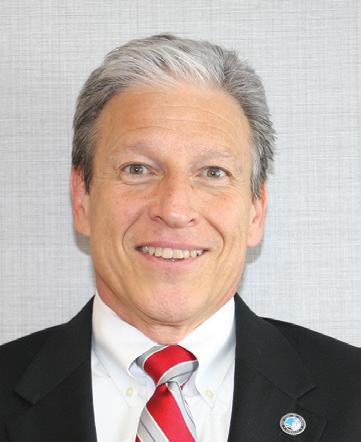
24 DISCLOSURES • MAY/JUNE 2016 • DISCLOSURES.VSCPA.COM TAXATION
ENCOURAGING INNOVATION
New federal and Virginia opportunities with R&D tax credits
BY MICHAEL KRAJCER, CPA
More than three decades after Congress passed the original legislation creating the Research and Development (R&D) Tax Credit, intended to stimulate the stagnant economy of the early 1980s, it is finally a permanent part of the U.S. Tax Code. The credit was included in the PATH Act of 2015, signed into law by President Barack Obama on Dec. 18, 2015. u

DISCLOSURES • MAY/JUNE 2016 • DISCLOSURES.VSCPA.COM 25 TAXATION
TAXATION
A permanent R&D tax credit is great news for innovative businesses, most of which have long understood its bottom-line value, but have been reluctant to make it a larger part of their tax strategy due to the perception of instability. And along with this new permanency, legislatures have also introduced a few surprises to freshen the 35-year-old credit.
The Alternative Minimum Tax (AMT) turnoff
One of the major changes to the new and improved R&D credit is that it now allows small business owners to claim it against their AMT liability. In the past, the AMT served as a defacto barrier to many small businesses attempting to recoup their innovation expenses. Removing this barrier provides a new incentive for these businesses to reprioritize or even double-down on their R&D spending. This provision applies generally to taxpayers with less than $50 million in gross receipts, and is effective for tax years starting after Jan. 1, 2016.
The payroll tax offset
Early-stage startups have something to be excited about, since they can now claim R&D expenses against their payroll taxes for up to five years. Technically, these startups have always been eligible to claim the R&D credit, but there was very little incentive for them to do so, since the credit was only useful for offsetting income tax and most startups are not yet profitable. This provision applies generally to taxpayers with less than $5 million in gross receipts, and is effective for tax years starting after Jan. 1, 2016.
For those who have followed this 30-year saga, both of these changes cut to the core of what the R&D credit was always supposed to be about. By making the credit permanent, eliminating the AMT barrier and bringing into the fold our nation’s stable of cutting-edge tech startups, legislators will almost certainly incentivize more innovation than ever before.
A BRIEF HISTORY OF THE FEDERAL R&D CREDIT: 1981–2015
The Research and Development Tax Credit was originally enacted in 1981 as part of the Economic Recovery Tax Act. It came during a time of widespread concern that the U.S. economy — then strapped to the back of the flagging domestic automobile industry — was simply unable to compete in the face of globalization.
Legislators were only able to agree on a temporary credit, set to expire at the end of 1985, but it was eventually extended. Thus began an awkward cycle in which the credit, ostensibly popular across party lines, became a kind of political football, being allowed to expire eight times before eventually being renewed retroactively after negation. In total, the credit was temporarily extended 15 times before Congress finally made it permanent.
Amidst these years of party politics, a significant change came in 2003, when regulators formally eliminated the “Discovery Test,” a defacto rule that essentially required U.S. companies to make revolutionary new discoveries in their industry in order to qualify for the R&D tax credit. Like the AMT barrier, this test threw up a large obstacle for many companies who were working hard to stay competitive, but were unable to claim some “revolutionary” invention in their particular industry.
By clarifying that companies were only required to make discoveries that were “new to them,” the new regulations opened the door for many of these companies. However, it also drew the attention of U.S. Internal Revenue Service (IRS) auditors, who began to exercise more scrutiny over some new R&D claims.
The second major change to the credit came with the introduction of the Alternative Simplified Credit (ASC) calculation, an alternative method to the general calculation methodology. Although the ASC can result in less total credits calculated, the calculation is simpler, requires less historical information
than the general method and has traditionally been the preferred methodology of the IRS. In addition, the need to increase R&D expense to earn credits is significantly reduced by this method, via a statutorily allowed reduction to the base amount component of the calculation. These factors have combined to make it a popular option in recent years, especially for proactive companies looking to plan out a long-term R&D strategy.
WHAT IN THE WORLD IS A QRE?
Whether they choose the simplified or general method of calculation, the R&D credit is ultimately calculated by defining how much of a company’s activities during the year(s) are directed toward research and development.
Determining whether or not specific company activities meet the government definition of R&D means exposing them to a “four-part test” designed to determine whether they:
1. Meet the permitted purpose of the regulations (for example, developing a new or improved product or business process);
2. Involve some level of technical uncertainty;
3. Follow a process of experimentation;
4. Involve the use of one or more scientific principles, such as chemistry, engineering or computer science.
Once the activities that meet these tests are identified, a taxpayer must calculate the credit eligible expenses. Unfortunately, not all R&D expenses qualify for the credit. Only Qualified Research Expenditures (QRE) may be included in the credit calculation, categorically defined as:
>> Wages
>> Supplies
>> Contract Research (i.e. vendorconducted R&D)
26 DISCLOSURES • MAY/JUNE 2016 • DISCLOSURES.VSCPA.COM
Depreciable assets utilized in the conduct of R&D (e.g. research facilities, test labs, computers, etc.) are statutorily excluded.
R&D IN THE REAL WORLD
Beyond the regulatory barriers, many companies do not claim the R&D credit because they follow a much more strict definition of R&D than the government. The easiest way to explain this difference is to use a specific industry example. Take injection molding. A molding company attempting to create a totally new product using a type of polymer that has never been successfully integrated into the manufacturing process would obviously qualify for the R&D credit.
But what about a molder that is attempting to make a legacy product stronger or lighter. What if they simply want to make the product more cost-effective to manufacture? Often, they do not realize that these activities also qualify as R&D.
The same logic holds true for companies attempting to automate their manufacturing processes or redesign their molds and manufacturing methodologies to save time, money or both. Even if they are not the first company in their industry to do what they are attempting to do, their work meets the government definition of R&D, since it is still new to the company undertaking the effort, and often carries with it a great deal of technical uncertainty as a result.
In the real world, R&D often takes place far outside the laboratory. That’s why the day-to-day activities of many U.S. companies attempting to leverage technology and innovation to get ahead or stay ahead are likely to qualify for the R&D credit. It’s only fitting, considering the mission of those who passed the original credit in 1981.
THE VIRGINIA R&D TAX CREDIT
In addition to the federal R&D credit, many states also offer some form of incentive for companies attempting to leverage innovation.
However, there is a great deal of variation between these state credits and some accomplish their goals much more effectively than others.
Historically, the Virginia R&D Credit has been one of the most effective state credits available, and has recently been improved. Beginning in 2014, the credit limit has been increased to now allow a maximum credit of 15 percent (20 percent if research was conducted in conjunction with a Virginia public or private college or university) of the first $234,000 of qualified Virginia research expenses (equal to a $35,100 credit). In addition, the annual cap for the credit has been increased from $5 million to $6 million.
And it’s REFUNDABLE! A taxpayer that does not utilize all its credit against current tax liability may receive a refund of the excess. In some cases, a taxpayer may want to claim the Virginia credit since it is refundable and forgo claiming the federal credit if it cannot be utilized (the federal credit is not refundable, but can be carried back one year and carried forward 20 years). There is no requirement that to claim a state credit, a taxpayer must also claim a related federal credit.
Although the Virginia credit statute generally defers to the federal credit statute for the definition of qualifying activity and eligible expenses, there are some very important differences to be aware of. For example:
>> The research and development activity must take place in Virginia.
>> Claimed expenses for the credit must be incurred for Virginia qualified research.
>> A taxpayer must submit its application for the credit to the Virginia Department of Taxation by April 1, 2015. No extensions are allowed.
For tax planning purposes, please note that the credit has been extended through Dec.
31, 2018. In addition, the credit may be used by the owners of a flow-through entity, or elected to be utilized at the entity level. Finally, expenses used in the calculation of the Virginia R&D Credit may not be utilized as a basis for claiming any other credit allowed under the Code of Virginia.
CONCLUSION
Today’s revitalized R&D credit is arguably closer than it has ever been fulfilling the original mission of its authors to incentivize homegrown innovation and keep the U.S. competitive in a rapidly evolving global marketplace.
A permanent federal credit brings with it the stability successful companies need to make the credit a larger part of their overall R&D strategy. Meanwhile, the new perks for startups and growing small businesses help to ensure we are not neglecting the young companies that will come to define our economic future.
If more states begin following the lead of forward thinkers like Virginia, the positive effects of the revitalized federal R&D credit will only be magnified. That’s good for business, as well as the long-term health of the U.S. innovation economy. n
MICHAEL KRAJCER, CPA, JD, is the president of Tax Credits Group in Cleveland, Ohio. He has more than 25 years of experience in research tax credit consulting and related IRS/ state tax controversy resolution.
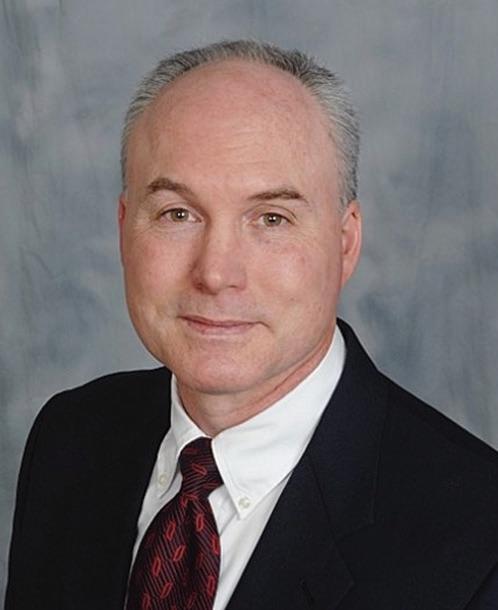
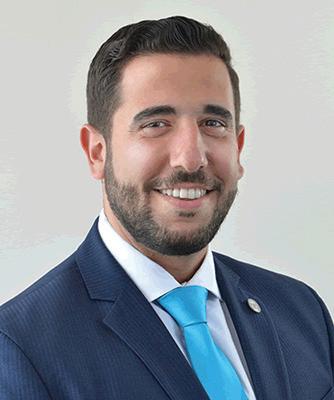 michael@taxcreditsgroup.com
michael@taxcreditsgroup.com
DISCLOSURES • MAY/JUNE 2016 • DISCLOSURES.VSCPA.COM 27 TAXATION
CUT THROUGH THE WEARABLE HYPE
BY ADAM CHAIKIN, CPA, CITP, PMP
It’s hard to recall a more anticipated product rollout than the Apple Watch before the holidays in 2015. That is, of course, if your memory is short and you can’t recall the anticipation before holidays in 2014, 2013 and so on.
The differentiator for 2015 was not only related to the watch, but also other wearable technology. The technology itself is changing so fast, even its name can’t keep up. Newly minted labels like “tech togs” or “fashion technology” are sweeping the retail space. And with the near-ubiquitous presence of these devices at the health club, yoga class, boardroom and even the nature trail, where do we go from here?
For the purposes of our discussion, we will focus on a narrow sliver of the wearable technology segment related to physical fitness, which was early to the wearable technology market and is more mature than some other wearable applications.

28 DISCLOSURES • MAY/JUNE 2016 • DISCLOSURES.VSCPA.COM
TECHNOLOGY
THE HYPE CYCLE
To gain a deeper understanding of where this technology falls in the boom and bust cycle of technology, we should consider the Gartner Hype Cycle. According to Gartner, a technology research and advisory company, “Gartner Hype Cycles provide a graphic representation of the maturity and adoption of technologies and applications, and how they are potentially relevant to solving real business problems and exploiting new opportunities. Gartner Hype Cycle methodology gives you a view of how a technology or application will evolve over time, providing a sound source of insight to manage its deployment within the context of your specific business goals.”1
Visit vscpa.com/GartnerHype to check out the hype cycle of emerging technologies in 2015. Not surprisingly, the market saturation of these devices is driving the wearables from the cycle known as the “peak of inflated expectations” into the “trough of disillusionment.”
You may be entering disillusionment yourself, having now tried and discarded a number of devices to passively monitor various aspects of your life, from exercise routines to sleep quality. On a personal level, I have been through two different ecosystems of wearable technology and currently am not using anything. For me, neither device was able to give me what I was looking for in the way of monitoring exercise, caloric intake, sleep quality or any other tasks. The devices, despite their small forms, seemed too onerous to wear continuously — and because I was wearing them so much, they got physically beat up very quickly.
How long are you using devices before they get thrown in the drawer? For me, each experience lasted about six months. At that point, the user experience started to fade and become more of an inconvenience. This consisted of device malfunction leading to loss of data, reduced battery life, loss of interest in the data displayed in the user interface and
inability to reach goals. The second a device created more fatigue for me, I put it in the drawer intending to start using it again in a few days. But days turned to months.
There it sat, unused.
FIRSTHAND EXPERIENCE
I spoke with 9-year-old Noah of Bethesda, Md., about his experience with a wearable fitness device. He succinctly told me why his relationship with the device ended just days after Hanukkah 2015. The device, a gift from his mother, was from a foreign manufacturer. When I asked Noah why he lost interest in the device so quickly he said, “It did not accurately measure my steps [and] it was more complicated to use than I thought.” When I asked him about the complexity, he said, “It was hard for my mom to set up.” Indeed, the fact was that the instructions were in a foreign language and the online tutorial was not much help either.
I also asked him what features could have been incorporated to make it a better overall experience, and he said, “I’d like to know my steps, how quickly I fell asleep and what my blood sugar is.” Noah is clearly a digital native and knows precisely what he is looking for.
The complexity factors aside, Noah’s experience as a 9-year-old is not that dissimilar to that of many adults. First, devices do not accurately measure what they say they will. Second, they are sometimes hard to configure and calibrate for your specific height and weight. Finally, and by no means least, they leave you wanting just a little more information than they are currently able to provide.
In an effort to make wearable devices more palatable and longer lasting, fashion companies are embracing them and trying to incorporate them into their lines of sportswear. Tory Burch, a purveyor of women’s fashion, has started transforming wearable technology into a fashion statement.
The market for this is big and only getting bigger. One analyst estimates that the market for wearable tech could blossom to $70 billion by 2025.2 This is in line with the Garter Hype Cycle, which indicates that the plateau for this market will be reached in five to 10 years.
Some of the appeal of these devices lies in the available applications that allow people to track progress and even integrate with social networks. By linking these devices with software from the manufacturer, users can track sleep, workout and goal performance. Some of them, like Nike, permit the ability to share goals and challenge other people in your social network to compete toward a common goal (i.e. who can complete 20 miles while running in a particular week). I had taken the opportunity to post my workout progress to my Twitter feed on more than one occasion, and much to my satisfaction, I received a number of likes, retweets and encouraging comments along the way. My post included a summary of my workout (time and distance) and the route that I took during my routine.
THE FUTURE OF WEARABLES
Trying to determine the next horizon for wearable technology in the fitness space will be the focus for many retailers. Clearly, they are going to need to continue to push the outer limits of what is possible in order to continue to stimulate demand from consumers. These consumers will be looking for more than just the basic functions of a pedometer and a heart rate monitor. The accuracy of these devices and the amount of information stored will need to increase. The amount of reporting intelligence on the history of the fitness routine will also need to expand.
There are a number of other concerns that retailers will need to consider over and above the form and function of the device, such as safety and privacy. u
DISCLOSURES • MAY/JUNE 2016 • DISCLOSURES.VSCPA.COM 29 TECHNOLOGY
The graveyard: The author’s collection of gently used wearable fitness devices that have been retired due to boredom.

SAFETY
A lot of sensitive information is accumulated on wearable devices, which is often then shared or stored on computers or in the cloud and could be a potential target of nefarious hackers or thieves.
Consider that the information stored on these devices captures the date, time and location of your workout routine. Unsophisticated petty thieves can use this information to their advantage by looking at routines that are developed. For example, Aden, an attorney in Boston, runs every Monday evening from 7:30 p.m. to 9:00 p.m. A low-tech burglar could use that time to visit Aden’s home.
The specific issue here has been around for more than a decade with social media (you should just not post your whereabouts online, whether it be Facebook, Twitter or another
social media feed). But with wearables, users may not know they are posting more information than necessary via their fitness devices. Said another way, you would never post information about your vacation on Twitter, such as where, when and for how long you will be gone. Don’t let your fitness device mistakenly do it for you.

PRIVACY
For years, the auto industry has been willing to offer drivers a safe-driving discount. People who represent lower risks to the auto insurance company will get lower premiums. In turn, this reinforces the good behavior of drivers so they continue to drive safely.
Traditionally, this has been a retrospective review of your driving history. So, drivers with safe driving histories would continue to be on
30 DISCLOSURES • MAY/JUNE 2016 • DISCLOSURES.VSCPA.COM
TECHNOLOGY
Up to 26 CPE credits Topics: tax, accounting & auditing, finance, business management & technology Virginia Beach Retreat July 11–13, 2016 | Hilton Virginia Beach Oceanfront vscpa.com/CPE | #VABeachRetreat
their best behavior to get additional discounts.
Now, auto insurance company Progressive has deployed their Snapshot device. This allows them to monitor the safe driving of its customers on a real-time basis. The system, connected through the mobile phone network, monitors the braking routines of its drivers and then a computer determines if the safe driver discount applies. In this instance, consumers are inviting the insurance company into their vehicles to allow them to analyze their driving patterns so that hopefully, if the computer database agrees, they will get a discount applied to their next bill.
Can today’s wearable technology can be used as a means to provide a “safe-living discount” similar to what auto insurance companies are able to do? The concern is whether this can
be done overtly (with the permission of the applicant) or covertly (against their wishes).

Consider that the information from wearables could be used by much more sophisticated organizations to assess your risk or liability to them. Imagine a situation in which you are completing an application for health insurance. The health insurance company offers a discount for people managing their weight with routine exercise and diet; however, you are keeping a virtual diary that shows your life is not as pristine as the application might indicate. Insurance companies could access this information through online data mining and limit or remove the discounts available to individuals.
CONCLUSION
For the trend in wearable technology to continue, specifically in the fitness market, devices will need to enhance their accuracy, measure more types of movements and expand the online analytical capabilities they have to offer. Consumers are best served by comparing the requirements they have from a device to what each one can offer. Further considerations are related to safety and data privacy.
For your safety, consider limiting the amount of information available to the public on when, where and how long you exercise. Also, pay attention to the privacy of your data. Consider how the technology company stores and then uses this data. The number of globally recognized technology firms that are competing in this arena are significant. My expectation is that there will still be many fun and beneficial enhancements to come. n
1. www.techrepublic.com/article/the-dark-sideof-wearables-how-theyre-secretly-jeopardizingyour-security-and-privacy/
2. https://securityintelligence.com/the-securityand-privacy-of-wearable-health-and-fitnessdevices/

ADAM CHAIKIN, CPA, CITP, CGMA, is founder and principal at Thought2Execution LLC in Vienna, which specializes in finance, project management and ERP systems. Adam is a CITP champion for Virginia for the American Institute of CPAs and sits on the Disclosures Editorial Task Force.
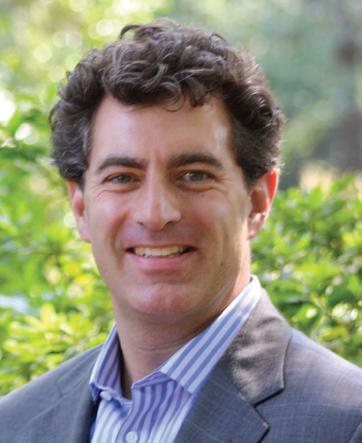
Adam.Chaikin@Thought2Execution.com connect.vscpa.com/AdamChaikin @Thought2Execute
linkedin.com/in/adamgchaikin


DISCLOSURES • MAY/JUNE 2016 • DISCLOSURES.VSCPA.COM 31 TECHNOLOGY We just broke the mold in the benefits industry. We’re offering the single most critical benefit for you and your clients — advice. Sound, actionable advice. This changes everything. Game Change. Game On? Endorsed by the VSPCA P age g ordon , S enior B enefit C on S ultant C all : 877.998.7272 email : pgordon@vscpainsurance.com vi S it : www.digitalbenefitadvisors.com/vspca
Attention CPAs:
Whether A Decision Maker Looking To Upgrade Your Talent, Or A CPA Looking to Upgrade Your self/Your Skills, Ask Yourself:
Who really chose who in joining your company?
Are you/your professional staff really at the right level where you should be/you need them to be?
Are you/your staff in a position that truly suits your/their personality, values, and professional and personal needs?
Why leave your future to chance?
If you’re seriously interested in making the “right” move for your next hire, I can help you. I am an actively licensed CPA in Maryland and Virginia with over 20 years of experience including public accounting (E&Y) and consulting (KPMG), financial accounting (American Cancer Society), internal audit (Moneyline Tele rate), and recruiting (Acsys, formerly Don Richards). As a networker who truly enjoys helping others and sharing my career experiences to guide fellow professionals, here is how I can help you:
Decision Makers:
Ask you questions, and most likely ask many more questions than other recruiters about your company, duties involved, skills required, corporate culture and more
Work with you on finding the “right” professional that is the “right fit”
Provide you with valuable information about the professionals I work with, the marketplace, what your competitors pay, and more
Career Seekers:
Guide you on career paths available in public accounting and industry
Enable you to capitalize on your strengths
Coach you on how to put your best foot forwa rd to find the “right fit”
Advise you when to stay in your current position if that is the right move
If you’re interested in working with a recruiter who understand s your background, skills, and is genuinely interested in helping you find the
right fit
BETH A. BERK, CPA , CGMA
Recruiter
then I welcome meeting you!
“
” ,
Independent
Specializing in CPA Firm, Accounting & Finance Positions in Metropolitan DC & Nearby Suburbs/Baltimore/Richmond/Tidewater Connecting You To Your Next Hire TM Contingency & Retained Staffing Solutions matching skills, experience & values with needs Serving clients and professionals as an Independent Recruiter since March 2005 Phone: 301 767 0670 Email: BethABerk@msn.com
VSCPA news
Introducing the LEAD round
We’re thrilled to launch our new LEAD program suite, aimed at giving accounting professionals the tools they need to grow their leadership and advance in the profession. Part of that is staying in touch with the needs of our members. So we’ll use this space every month to question two VSCPA members — a seasoned CPA and a young professional — about their views on leadership issues affecting the profession and how they would (or do) deal with those issues.
We’d like to offer a hearty thanks to our first participants: GEORGE FORSYTHE, CPA, of WellsColeman in Richmond, and ADITYA YERRAMILLI, CPA, of Google in Mountain View, Calif. We asked them:
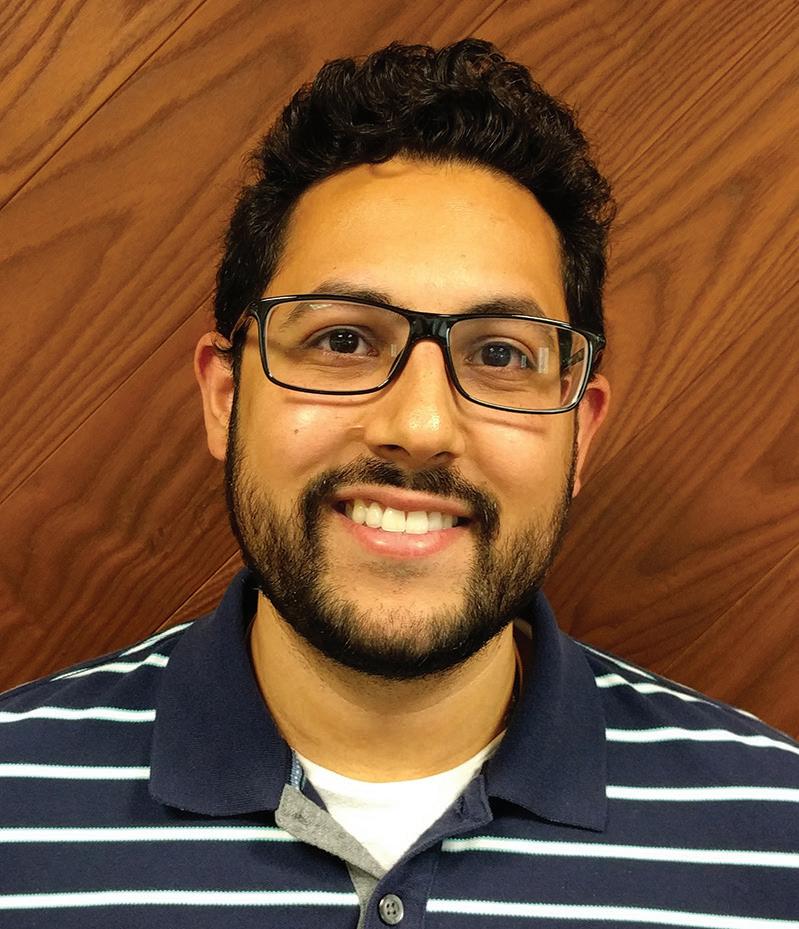
What do you think is the biggest leadership gap in the CPA profession? What steps can be taken to address this gap?
GF: I believe the biggest gap in our profession’s leadership is with the ability to manufacture future leaders. We are very well trained in developing staff for technical proficiency; however, when it comes to soft skills, we tend to prioritize items that will generate income in the near term rather than the long term. For those accountants out there, this can easily be compared to the profit and loss (P&L) approach versus the balance sheet approach. Your P&L determines your current year’s income, while your balance sheet determines your future income. Soft skills are a part of those long-term assets and cannot be easily mastered over a lunchtime webinar or during an 8-hour continuing education workshop. They require frequent exposure, thoughtful digestion and a great deal of practice.
One way that our partners seek to model their soft skills is through honoring our Partner Commitment Statements. These commitments serve as our firm leaders’ code of conduct and behavioral covenant. They include behaviors and traits such as unity, transparency and communication, responsibility, continuous improvement and leadership. Along with these commitments, our partners lose the right to remain silent in meetings as we encourage passionate debate. However, once a meeting adjourns, we each fully support the decisions of the group and the firm. It is from this foundation that we may develop future leaders within our firms as well as preserving our profession’s relevance in the future.
AY: I believe the biggest gap in the CPA profession’s leadership is the ability to understand and effectively manage an increasingly diverse workforce. We are all familiar with identifying diversity in concept —
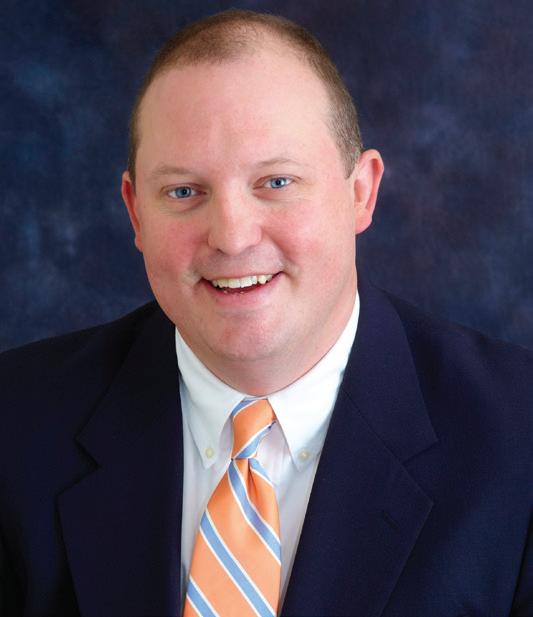 GEORGE FORSYTHE, CPA ADITYA YERRAMILLI, CPA
GEORGE FORSYTHE, CPA ADITYA YERRAMILLI, CPA
for example, recognizing that diversity exists in age, gender and ethnic background. However, many firms have a tiered management model (i.e., partners and managing directors, who manage managers, who manage senior staff, etc.), and these layers of management collectively represent the nature of leadership at the firm. Often times, these layers are not adequately prepared to understand (and manage) the diversity of their team. This leaves mid-managers to fend for themselves in difficult situations; and staffers are left feeling like they don’t have a voice.
There are a few steps a firm can take to change this. Firms should provide continued soft skills training to their personnel, with a specific focus on how to understand diversity — for example, learning about how diversity contributes to differences in work styles and communication. Having this understanding can help shape management to better communicate with and obtain feedback from their teams. This also gives a voice to staff to help them feel more empowered within the firm. Firms should also consider how they evaluate a manager’s (and team’s) performance. Often, a successful work product (e.g., utilization, overtime metrics, quality of work) is the primary output upon which the effectiveness of management is evaluated. Unfortunately, this model places a lot of emphasis on “what” is achieved and not enough emphasis on “how” it is achieved. Recalibrating performance evaluations to include how results are achieved can give a better insight firms on the sustainability of their leadership/management style. n
FIND THE CPE TEST ONLINE
Visit vscpa.com/CPE. Choose “On Demand” from the side filters to find the exam and others from previous Disclosures issues. n
DISCLOSURES • MAY/JUNE 2016 • DISCLOSURES.VSCPA.COM 33
Yourself: TM Solutions
Congratulations to the following members!
NEW HIRES >>
KEITH GRAY, CPA, has joined Arlington Family Offices in Birmingham, Ala., as a tax consultant.
DIANNE GUENSBERG, CPA, has joined Grant Thornton in Alexandria as a managing director in the firm’s public sector assurance practice.
PROMOTIONS >>
KAREN BENNETT, CPA, and AARON WALTERS, CPA, were named partners at Wilkinson Consulting and CPA in Danville.
BRIAN DEIBLER, CPA, and MIKE MENDELSOHN, CPA, were named partners at Malvin Riggins in Newport News.
KATHY GIANQUITTO, CPA, was named CFO at Hercules Fence Company in Norfolk.
RAVANN SOWA, CPA, has been promoted to senior manager at Homes, Lowry, Horn & Johnston in Fairfax.
BEN STOKES, CPA, has been promoted to supervisor at KWC in Alexandria
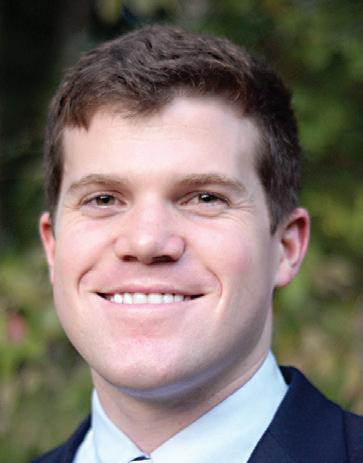
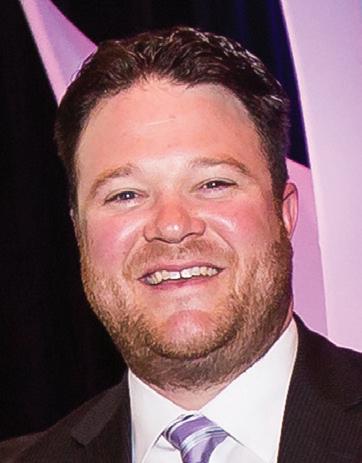
CALEB VULJANIC, CPA, has been elected as an assurance partner at Dixon Hughes Goodman in Tysons Corner.
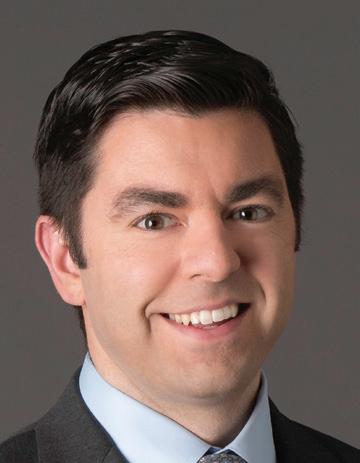
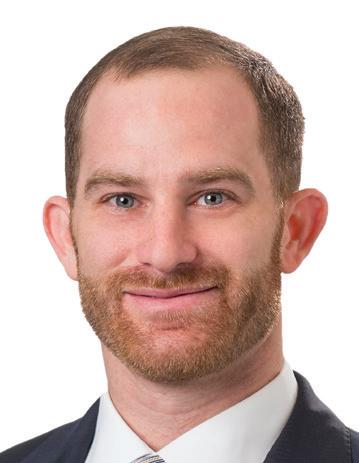
APPOINTMENTS & AWARDS >>
MONICA MODI DALWADI, CPA, a partner at Baker Tilly in Washington, was honored with the Washington Business Journal’s 2016 Minority Business Leader Award.
KEVIN REILLY, CPA, of PBMares in Fairfax, was named Tax Consultant of the Year, one of The BoardRoom Magazine’s 2015 Excellence in Achievement Awards.
ALAN WITT, CPA, CEO of PBMares in Newport News, was named to the Virginia Chamber of Commerce Board of Directors.
FIRM NEWS >>
BAKER TILLY was ranked No. 6 in the Top Health Audit Firms category and No. 10 in the Top Property/Casualty Audit Firms category in A.M. Best Co.’s Best’s Review national rankings.
Gaithersburg, Md., firm DeLEON & STANG was ranked No. 30 in Fortune magazine’s 50 Best Workplaces for Flexibility national rankings.
Alexandria firm KOSITZKA, WICKS & CO. is now known as KWC. n
MEMBER WINS ELIJAH WATT SELLS
VSCPA member
ERIC ALBEE had a standout performance on the CPA Exam. A Virginia Tech grad and an associate in the assurance practice at Dixon Hughes Goodman in his native Richmond, Albee is a 2015 recipient of the American Institute of CPAs’ (AICPA) Elijah Watt Sells Award for CPA Exam outstanding performers. Winners must obtain a cumulative average score above 95.5 across all four sections of the Exam and pass all four sections on the first attempt. n
THE VSCPA’S NEWEST CPAs
KATELYN BENSON
ANTHONY BLOCKER
APRIL FALLEN KEUN HUR KARRIE MAHLER SEAN MCCUE PAVLINA NOVAKOVA
MAGGIE OVINGTON ELISE PREVITERA
BRYAN SCOTT
BEN STOKES
MATTHEW THORPE
LAUREN TORRI ALEX TUVIN
ANDREW VORIS
FOSTER WOODBURN
VAN WOODS
BILL WRIGHT
JUNGHYUN YUH
List from February and March. Compiled April 4, 2016. n
34 DISCLOSURES • MAY/JUNE 2016 • DISCLOSURES.VSCPA.COM VSCPA news
Brian Deibler, CPA, Mike Mendelsohn, CPA, and Caleb Vuljanic, CPA.
Staff news
Two employees celebrate their 10th anniversary with the VSCPA: Education Specialist JANIE MEDLEY on June 5 and Finance and Human Resources Manager DIANE JONES on June 19.
Chief Operating Officer MAUREEN DINGUS, CAE, celebrates her ninth anniversary with the VSCPA on May 15.
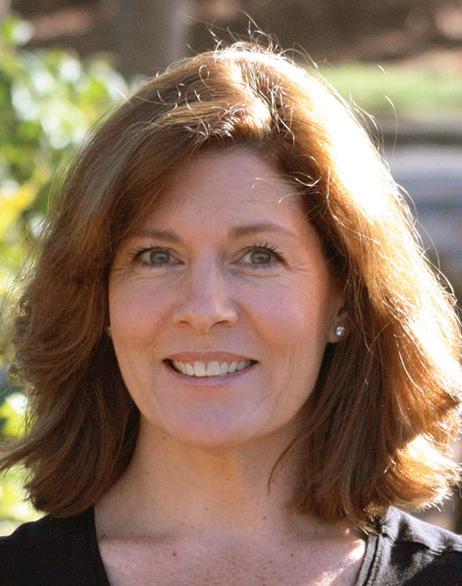



Education Coordinator TARA PENNINGTON marks four years with the VSCPA on June 18.

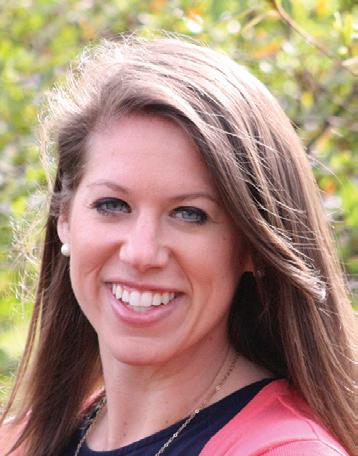
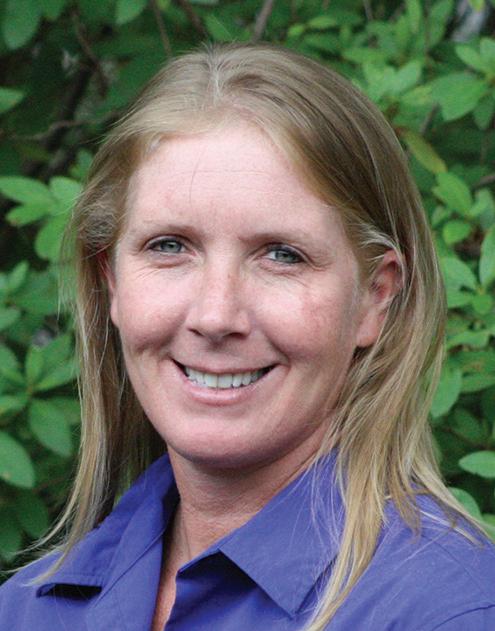
Three new employees have joined the VSCPA: Executive Assistant JULIE CHAMBERLAIN, Event Coordinator KATE MILLER and Student & Member Engagement Coordinator LAUREN SIMONETTI. Welcome to the team! n
We mourn the loss of...
WAYNE HAGA, CPA, a VSCPA life member from Princeton, W.Va. He was a graduate of Concord College (now Concord University) and a partner at Persinger & Co. in Covington. He served on the VSCPA’s Membership, Industry & Government Conference Planning and Public Relations committees and as president of the VSCPA’s Roanoke Chapter. He also held leadership positions in the Lions Club, the United Way, the Concord University Alumni Association and more.
MICKEY NICHOLS, CPA, of Burke’s Garden. A U.S. Army veteran, he served on the VSCPA’s CPE Selection and Membership committees, chairing the latter from 1986–1989.
ROGER SPERO, CPA, a VSCPA life member from Virginia Beach. A former managing partner with Sherman, Spero & Safarino, he graduated from Adelphi University. n
WE WANT TO HEAR FROM YOU!
Email disclosures@vscpa.com if you have exciting news to share. The VSCPA prints news of members’ awards, appointments and promotions as well as new hire and job change announcements. Firm news, such as mergers and acquisitions and community service activities, is also welcome. Feel free to send headshots, but please make sure they are highquality, 300 dpi JPG files. Due to space constraints, we cannot print degrees or designations awarded to members. n
DISCLOSURES • MAY/JUNE 2016 • DISCLOSURES.VSCPA.COM 35 VSCPA news
Top row: Janie Medley, Diane Jones, Maureen Dingus, CAE, Tara Pennington. Bottom: Julie Chamberlain, Kate Miller, Lauren Simonetti
OPEN VSCPA VOLUNTEER POSITIONS Thanks to all the VSCPA members who have signed up to volunteer with the Society! Among the volunteer opportunities currently open are: >> Chapter Officers >> Online Programs Planning Task Force >> Speaking & Community Engagement >> Ask a CPA Email Program Visit vscpa.com/VolunteerSchedule to volunteer. n
VSCPA 100% Member Firms
VSCPA 100% Member Firms show their commitment to their employees, the profession and the association. A 100% Member Firm is simply a Virginia CPA firm or company that has all of its CPAs enrolled as members in the VSCPA.
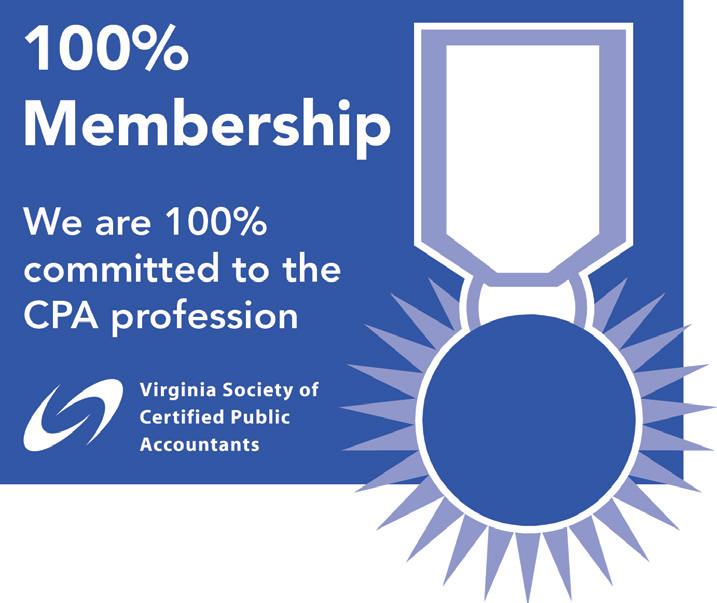
Interested in being listed as a 100% Member Firm? Contact VSCPA Member Relations Director Brenda Fogg at bfogg@vscpa.com or (804) 612-9409.
A.F. Thomas & Associates, PC
Adam & Co., PC
Adams & Delp, PC
Anderson & Anderson CPAs, PC
Anderson & Reed, LLP
Andrews CPA Associates, PC
Atlas Financial
Barnes, Brock, Cornwell & Painter PLC
Beale & Curran, PC
Beck & Company, CPAs, PC
Bennett, Atkinson & Associates, PC
Biegler & Associates, PC
Black Marlin CPA (Ann Black CPA PLC)
Bowling, Franklin, & Co., LLP
Boyce, Spady & Moore PLC
Britt & Peak, PC, CPAs
Bruce, Renner & Company, PLC
Bullock & Associates, PC
Burdette Smith & Bish LLC
Burgess & Co., PC, CPAs
Burnett & Sneed, CPAs, LLC
Cameron, Moberly & Hamrick, PC
Charles H. McCoy Jr., Inc.
Charles W. Snader, PC
Chesapeake Accounting Group PC
Christopher A. Enright, CPA, PLC
Cole & Associates CPAs, LLC
Coley, Eubank & Company, PC
Corbin & Company, PC
Craver, Green and Company, PLC
Creedle, Jones and Alga, PC CST Group, CPAs, PC
Dalal & Company
David L. Zimmer CPA PC
Diane Y. Smith CPA PC
Didawick & Company, PC
Donald R. Pinkleton, CPA
Donald W. Coleman, CPA, Inc., PC
Douglas L. Thompson, CPA PLLC
Duvall Wheeler, LLP
Eggleston & Eggleston, PC
Elmore, Hupp & Company, PLC
Everett O. Winn, CPA, PLC
Fritz & Company, PC
G4 CPA Firm, Inc.
Garland & Garland, CPAs, PC
Garris and Company, PC
G.L. Roberson CPA, PLLC
Graham and Poirot, CPAs, LLC
Gregg & Bailey, PC
Gregory & Associates, PLLC
Gurman & Company, PLLC
Hantzmon Wiebel
Harris, Hardy, & Johnstone, PC Harris, Harvey, Neal & Co., LLP
Henley & Henley, PC
Hogan & Reed, PC, CPAs
Holland & Brown LLP Homes, Lowry, Horn & Johnson, Ltd.
Honeycutt & McGuire CPAs
Hortenstine and McCown, CPAs, PC
Hottel & Willis, PC
Hughes & Basye, PC Hunt & Calderone, PC, CPAs J. Goddin & Associates, PC
Jay E. Reiner CPA PLLC
John M. Watkins, CPA
Johnson, Equi & Co., PLC
Jones & Company CPA, LLC
Jones CPA Group, PC
Jones, Madden & Council, PLC
Jones & McIntyre, PLLC JS Morlu, LLC
Katherine L. Foley CPA, PC
Keiter
Kositzka, Wicks & Company Kris McMackin CPA
L.P. Martin & Company, PC Lane & Associates, PC Larry D. Greene CPA PC
Lauren V. Wolcott, CPA, PC Lent & Hawthorne, PC M. Lee Winder & Associates, PC Maida Development Company
Mallard & Mallard CPAs, LLC
Malvin, Riggins & Company, PC Martin, Beachy & Arehart, PLLC McCallum & Kudravetz, PC McPhillips Roberts & Deans PLC Meadows Urquhart Acree & Cook, LLP
Michael B. Cooke, CPA, PC Michael R. Anliker, CPA, PC Miller Consulting Group, LLC Mitchell, Wiggins & Company, LLP Moss & Riggs, PLLC MJW LTD, PC Mulkey & Co., PC Nicholas, Jones & Co., PLC PBMares, LLP
Pearson&Co., PC
R.P. Willis, PC
R.T. McCalpin & Associates
Renner & Company, CPAs, PC
Robb Scott Bradshaw & Rawls, PC Robinson Consulting Group
Roger L. Handy, PC Rubin, Koehmstedt & Nadler, PLC
Rumble & Associates, Inc. Russell, Evans & Thompson, PLLC Rutherford & Johnson, PC Salter & Associates, PC Saunders, Matthews & Pfitzner, PLLC Saunders & Saunders, PC Scheulen, Patchett & Edwards, PC
Sells Hogg & Associates CPAs, PC
Sherman, Spero & Safarino, Ltd.
Spencer, Hager & Mosdell, PC
Spitler, Stephens & Associates PLLC
Stephen Merritt CPA, PC
Stephen F. Perry, PC
Stephen T. Shickel, CPA, PLC Steve Guy & Associates, PC Steve Walls & Associates, PLLC
Stokes Office Solutions LLC Sullivan, Andrews & Taylor PC
Terry L. Jones, CPA, LLC
The Cahill Group, LLC
The Davidson Group, PC
The Foley Group, Ltd.
Thomas E. Fraley, CPA
Thompson Greenspon T.L. Pyne, PC
Tongelidis Consulting, LLC
Updegrove, Combs & McDaniel, PLC
Valderas Financial Solutions LLC
Verus Financial Partners
Wall, Einhorn & Chernitzer
W.D. Sanders & Company, PC Wells Coleman White, Withers, Masincup & Cannaday, PC
Wilkinson Consulting & CPA PLC
William B. May Jr., CPA, PC Wineholt & Associates, PC
Yancey, Miller & Bowman, CPAs PLLC Yount, Hyde & Barbour, PC
Compiled April 1, 2016. Check vscpa.com/100Percent for a complete list. n
36 DISCLOSURES • MAY/JUNE 2016 • DISCLOSURES.VSCPA.COM VSCPA news
GROWTH, SALES & ACQUISITIONS
BUYING OR SELLING? We have the largest buyer network, experienced advisors, and a collaborative process. Learn more at www. poegroupadvisors.com or call 1.888.246.0974.

PLANNING YOUR EXIT? Download our free succession planning guide at www.poegroupadvisors.com
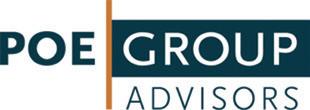


BUYING A CPA PRACTICE? Download our free whitepaper to find out what it takes to own your own firm. Visit www.poegroupadvisors.com
SALE/MERGER OPPORTUNITY — Well–established and diversified small Burke VA CPA firm seeks sale/merger opportunities. Practice clientele includes annual reviews, compilations and monthly accounting services. The firm has a significant individual income tax practice as well as a variety of business tax returns. The firms enjoys a long-standing on-site and unqualified or pass peer review history. In 2014 the firm’s only two audit clients were transitioned to a review level service. The firm is that of a sole practitioner seeking retirement or semi-retirement over the next 18 months. Growth and referral opportunities are excellent. Reply in confidence to #99, VSCPA, 4309 Cox Road, Glen Allen, VA 23060, or email disclosures@vscpa.com. Please put “Blind Box 99” in the email subject line.
OFFICE SPACE
SOLE PRACTITIONER CPA looking to share a nice open office space. 1,520 sqft in a nice mixed-used strip mall near the Richmond airport. $500 per month. Reply in confidence to #98, VSCPA, 4309 Cox Road, Glen Allen, VA 23060, or email disclosures@vscpa.com. Please put “Blind Box 98” in the email subject line.
ADVERTISE HERE
Classified ads are a great way to reach VSCPA members — 94 percent rate the information in Disclosures as excellent or good. What are you waiting for?
Contact us at classifieds@vscpa.com or visitvscpa.com/Classifieds for rate information. Members receive a discount.

Empower. Connect. Achieve.
Enroll in MentorMatch today, and take your career to the next level! You’ll expand your network and through peer coaching, gain insight into the professional and leadership skills you need to stand out. Our mentors will share their knowledge and provide a fresh perspective on the profession.
Find your mentor or become one today! The summer session begins July 15.
Enroll in MentorMatch Today | vscpa.com/MentorMatch
VSCPA news
CLASSIFIEDS
DISCLOSURES • MAY/JUNE 2016 • DISCLOSURES.VSCPA.COM 37
AM the vscpa
Two minutes with Melanie Randall, CPA
Melanie Randall, CPA, is treasurer at McKinney & Company Engineers & Architects in Ashland. She graduated from James Madison University and has served on the VSCPA Industry Conference Task Force and Speakers Bureau. She is currently on the VSCPA Educational Foundation Board of Directors.

I AM PASSIONATE ABOUT... Financial literacy, especially among young adults. A few years ago, we had an influx of recent engineering college graduates join the company. It was my task to walk them through the payroll forms and 401(k) information. I was astounded at the lack of exposure they had regarding any of the information. Some of them could not even produce a void check.
PEOPLE DON’T KNOW THIS, BUT… I ride motorcycles and jet skis. On my motorcycle, I enjoy riding as a way to clear my head and take in nature from a different perspective. On jet skis, I get to satisfy my need for speed and my love of the water.
IF I WEREN’T AN ACCOUNTANT, I WOULD BE… An engineer. Problem-solving that helps society fits in with my enthusiasm.

MY ADVICE TO FELLOW CPAS IS… Share the profession with others. I have met many individuals who felt the accounting profession was an exclusive club open only to a few. After conversations and encouragement, I think I have persuaded quite a few to explore this path. One individual had his English degree and went back for his accounting degree and is now preparing for the CPA Exam.
I NEVER LEAVE HOME WITHOUT… My plan for the day. I know what I wish to accomplish during the given 24 hours, even if life happens and I don’t.
I WISH CPAS KNEW: How much they are valued in the community.
I AM A CPA BECAUSE: Out of all the undergraduate classes I took as an undeclared major, accounting was the one where I felt totally at home. n
We time 5-step PROBLEM SOLVER >>
I
38 DISCLOSURES • MAY/JUNE 2016 • DISCLOSURES.VSCPA.COM
Thinking of selling?
the
about
Looking for a change of scenery?
by going
by

the
with
PoeGroupAdvisors.com • 1-888-246-0974 • info@poegroupadvisors.com
Learn
our unique process
online to PoeGroupAdvisors.com or
scanning
code
your smart phone. (Download
free Kaywa Reader in the app store.)
We will identify suitable candidates to carry on the success of the CPA firm you’ve worked hard to build. When the time comes to breeze into the next phase of life, we’ll be here to support the entire transition with our proven 5-step Seamless Succession™ process.
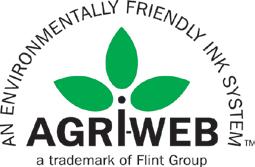




Virginia Society of CPAs 4309 Cox Road Glen Allen, VA 23060 Change service requested PRSRT STD US POSTAGE PAID PPCO Contact: Harold Martin | 804.273.6240 | hmartin@keitercpa.com www.keitercpa.com If your clients are involved in a complex litigation... You need the Keiter team. • Developing Strategy • Analyzing Industries and Markets • Evaluating Liability Issues • Assisting with Discovery • Developing Alternative Damages Theories • Quantifying Economic Damages • Analyzing Opposing Experts’ Damages Models • Preparing Demonstrative Exhibits for Trial • Preparing Expert Reports • Presenting Expert Witness Testimony • Shareholder/Partner Disputes • Breach of Contract • Business Interruption • Divorce • Intellectual Property Infringement • Post-Acquisition Disputes • Securities • Tortious Interference • Wrongful Termination Litigation Services Types of Litigations


































 BY PHILIP SAUL
BY PHILIP SAUL



 BY JENNIFER EVERSOLE, CPA
BY JENNIFER EVERSOLE, CPA

 BY CHIP KNIGHTON
BY CHIP KNIGHTON















 michael@taxcreditsgroup.com
michael@taxcreditsgroup.com






 GEORGE FORSYTHE, CPA ADITYA YERRAMILLI, CPA
GEORGE FORSYTHE, CPA ADITYA YERRAMILLI, CPA





















